
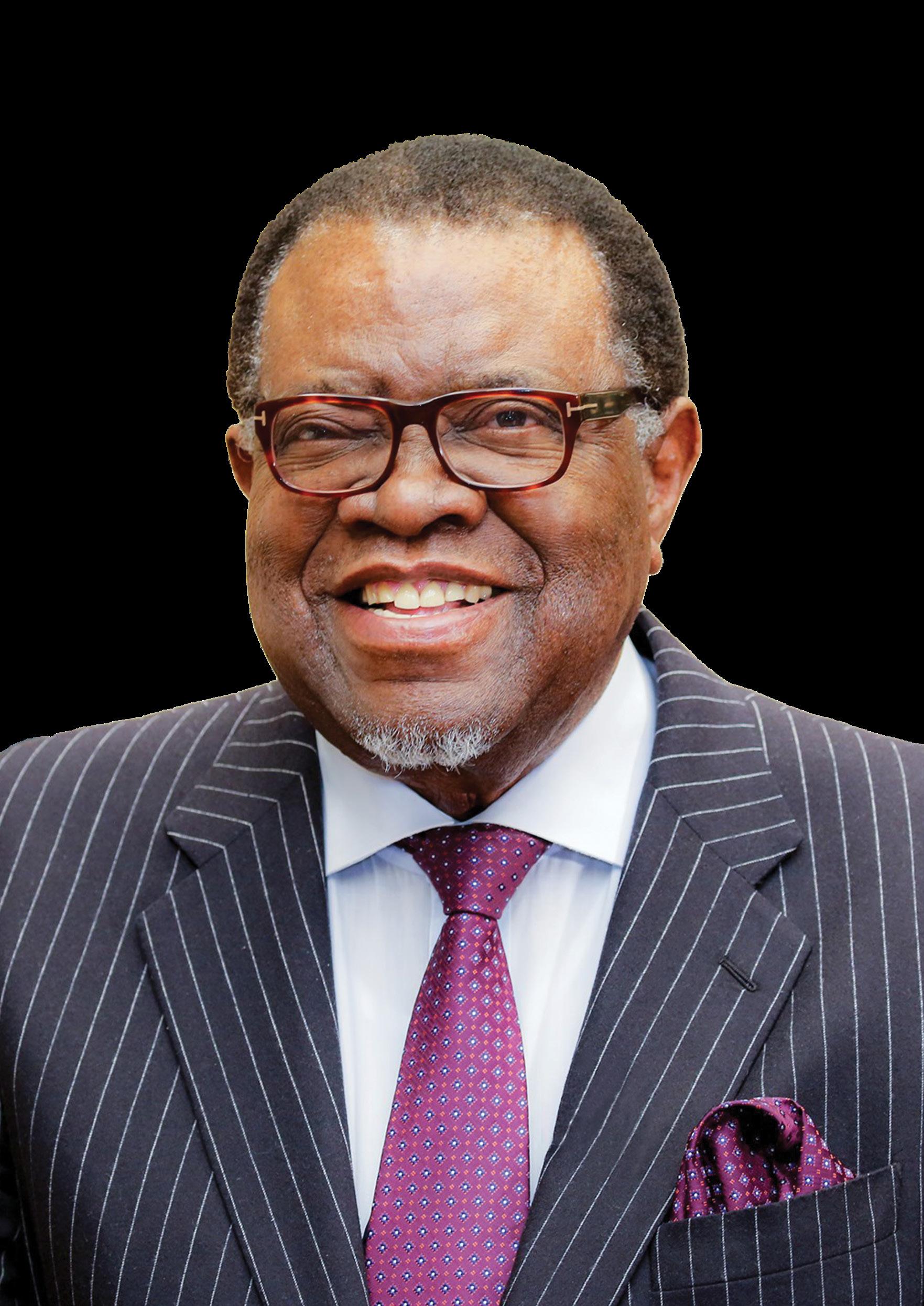







We work with our stakeholders to ensure that communities thrive, sustainably, through enabling quality healthcare and education.
At Namdeb, we are about more than mining. We are about mining for good.
NAMDEB. GOOD TODAY. BETTER TOMORROW.
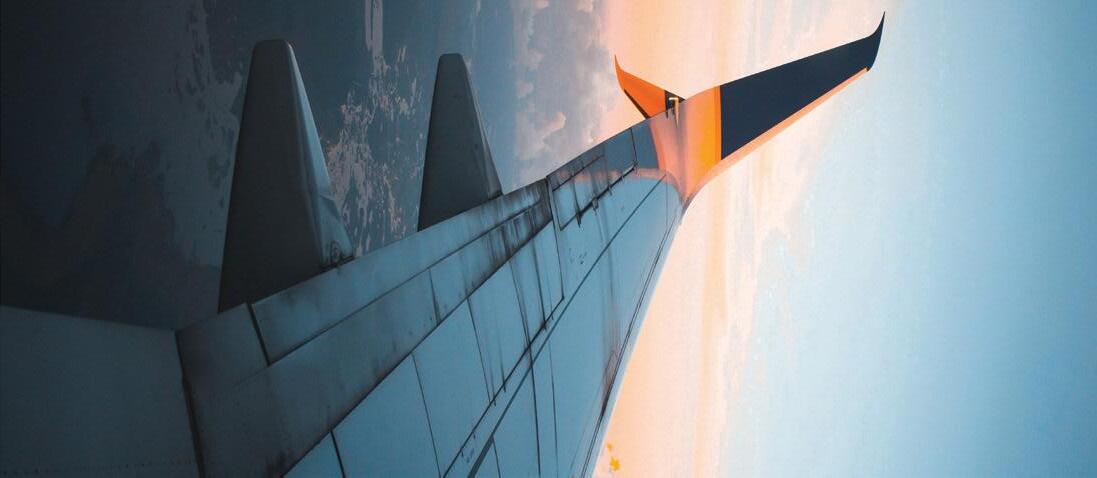




“But how could you live and have no story to tell?”
Fyodor Dostoevsky

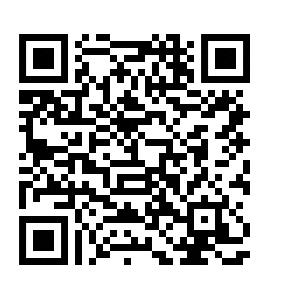


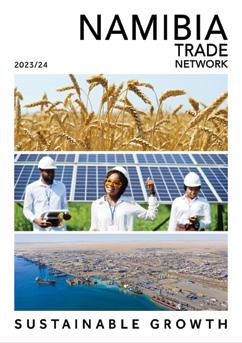
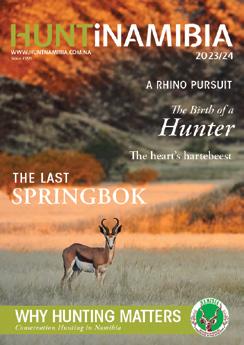
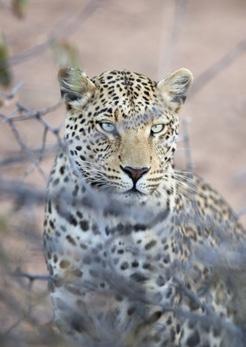
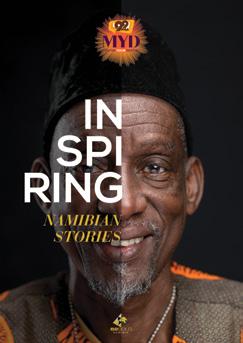
Meet the voices behind the incredible stories we share with Namibia each month. The pages of FlyNamibia are a collaboration of Namibian minds and passions and we hope you find a narrative that speaks directly to you amongst them.
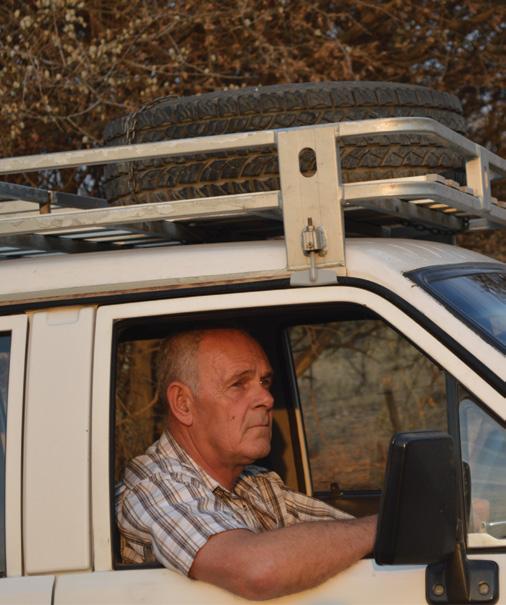

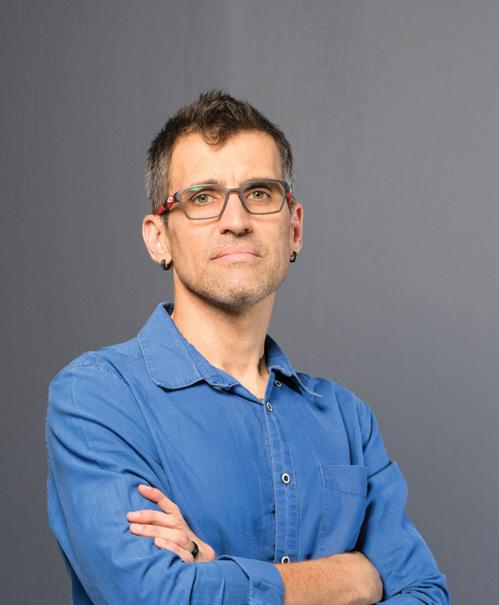
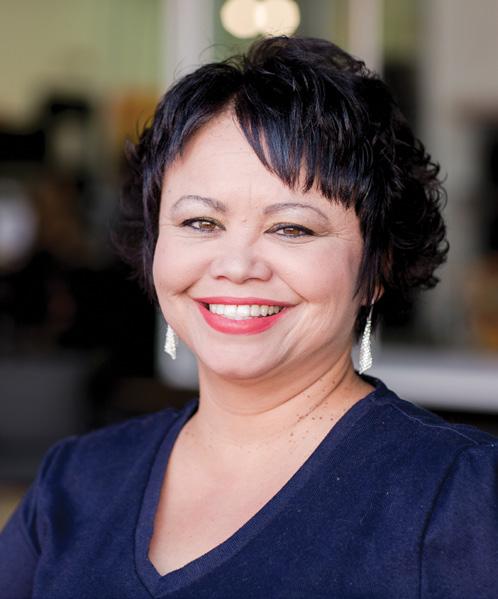
99FM News & Content
Passion and dedication to keep the nation abreast with what’s happening on national and international level.
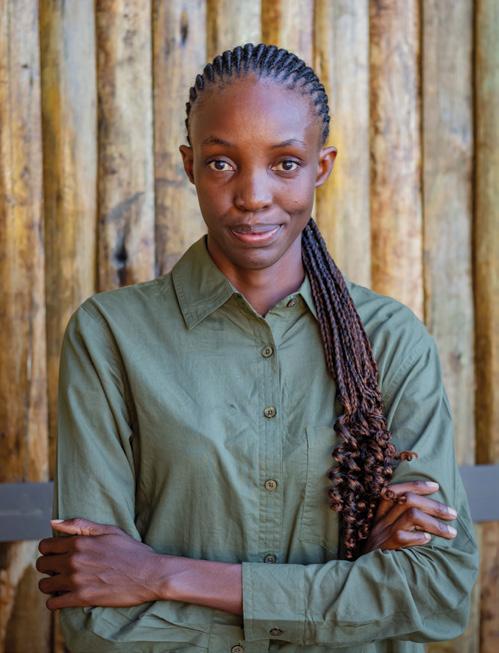




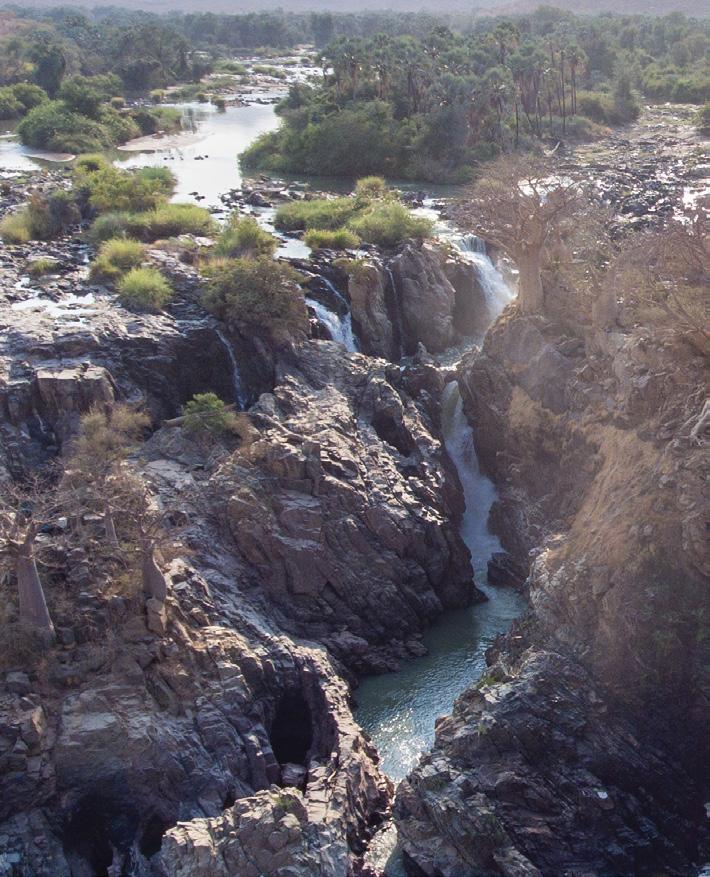


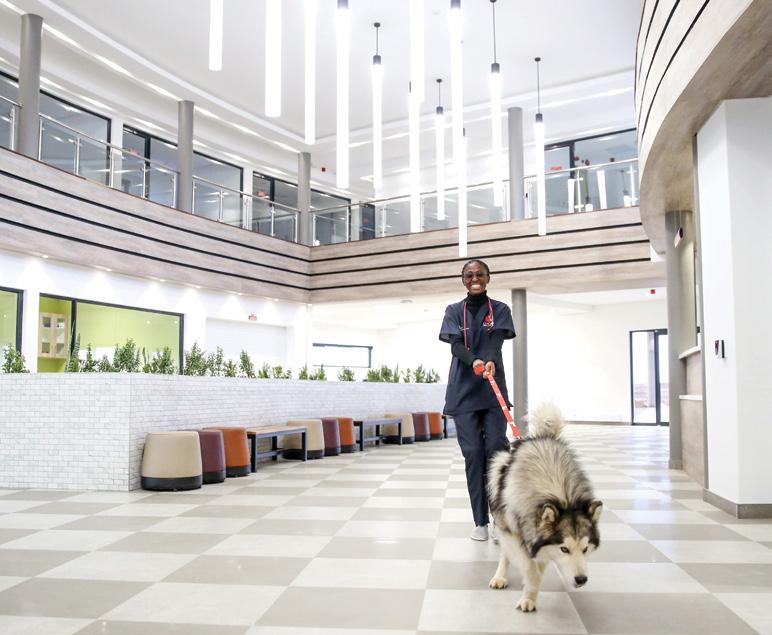
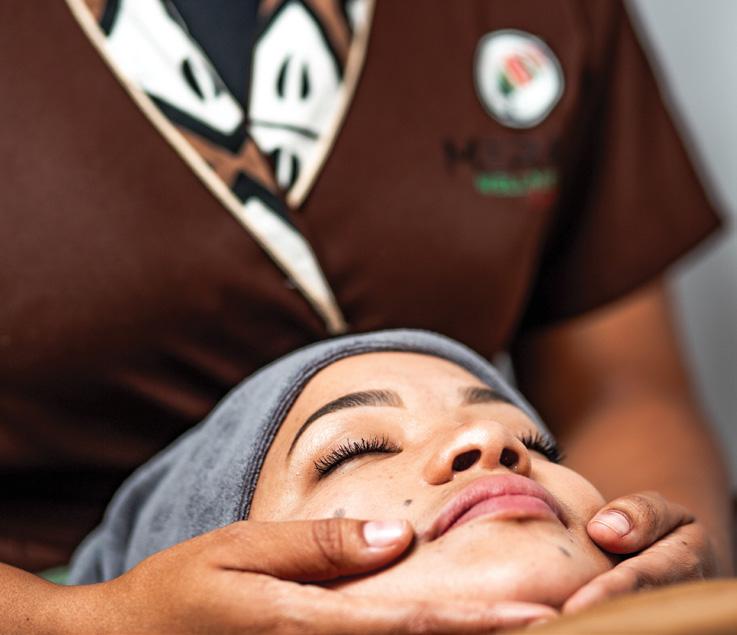

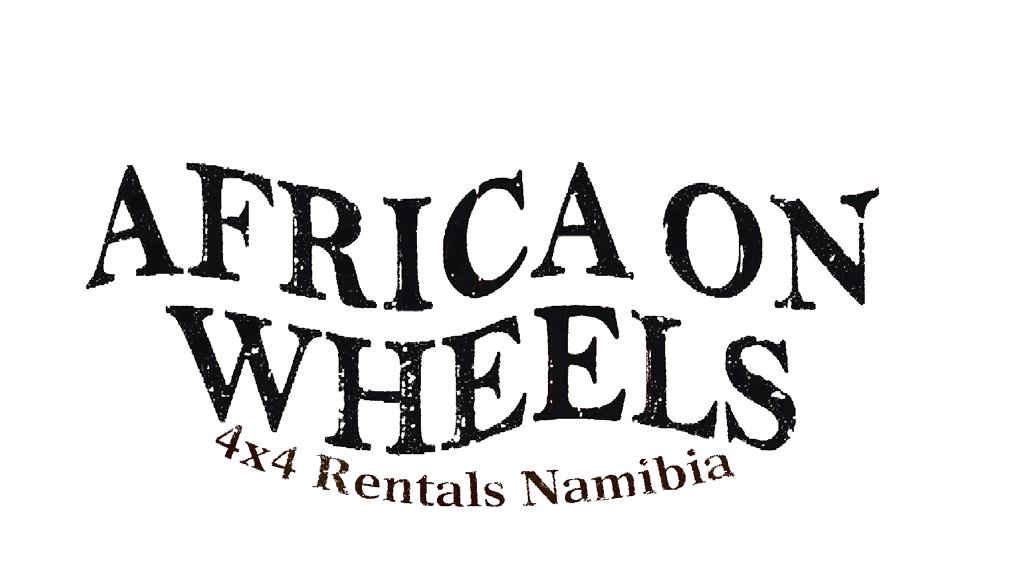
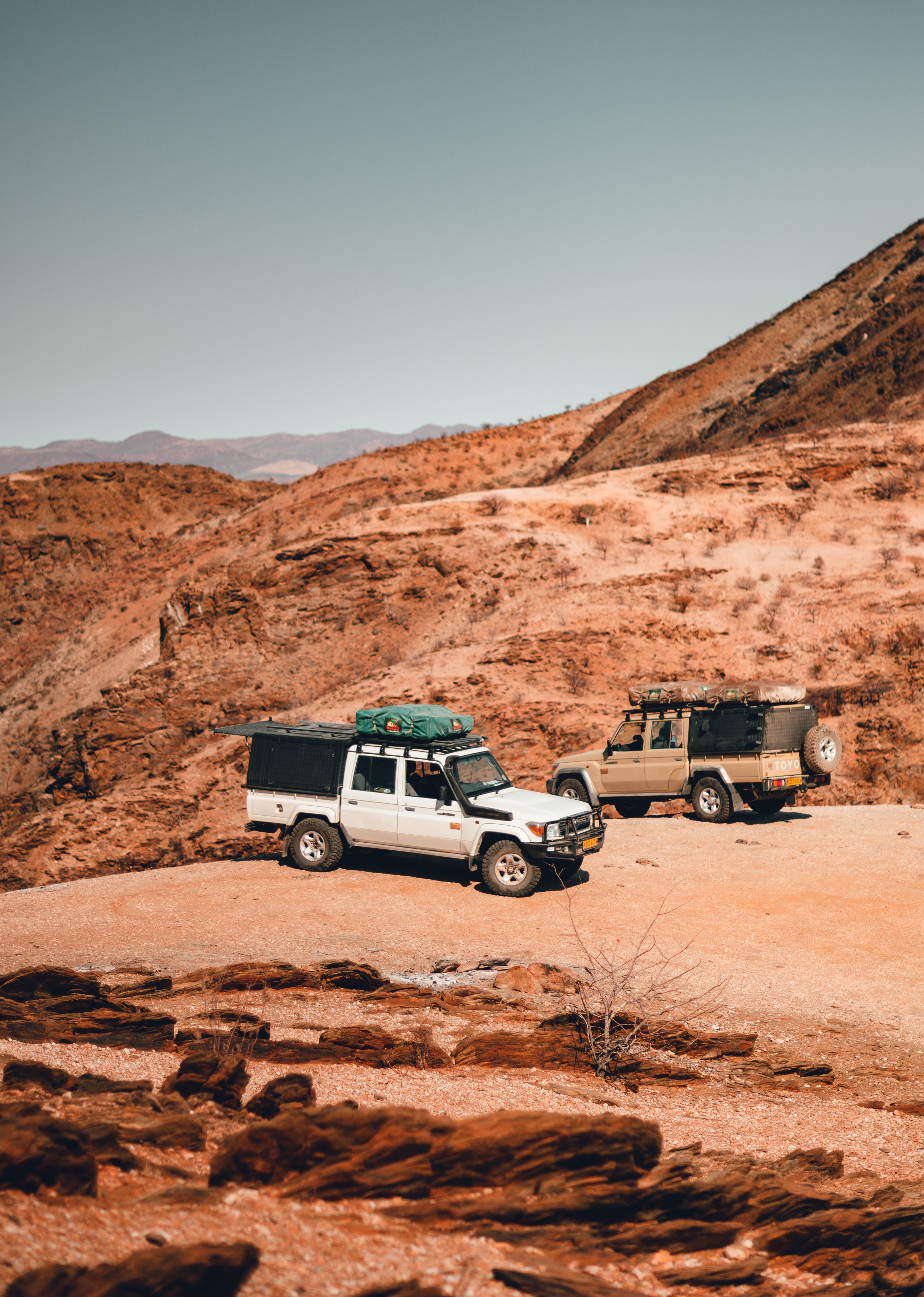
Tel: +264 61 232871
24hr emergency no: 081 129 3355
Email: info@africa-on-wheels.com
Website: www.africa-on-wheels.com
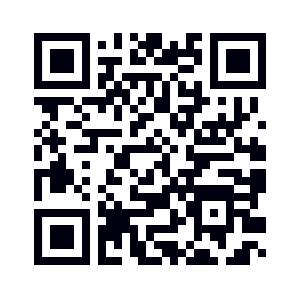


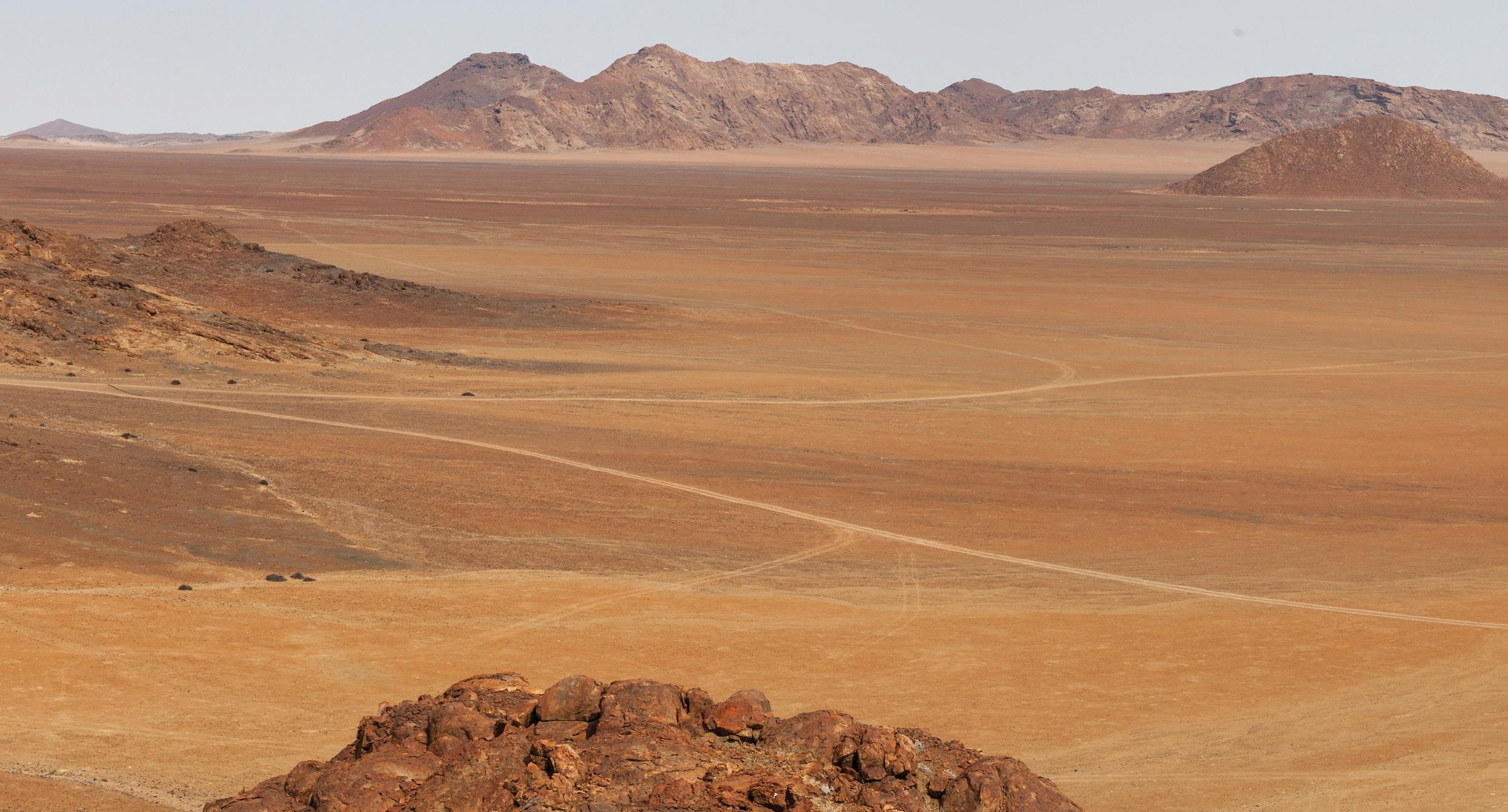
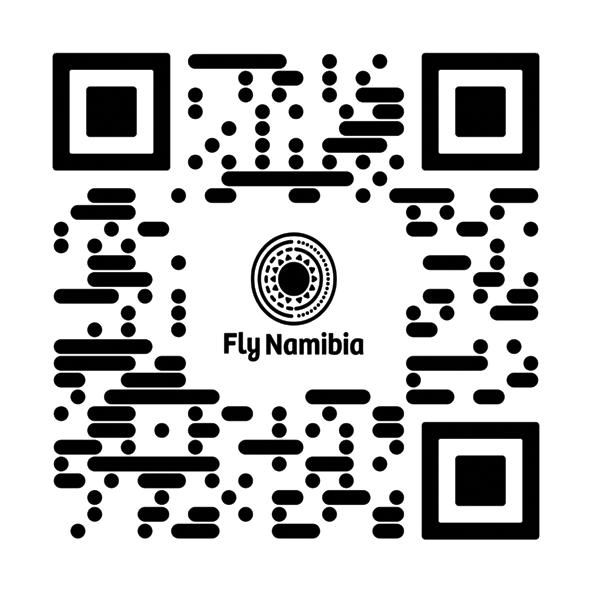
Contact The Call Centre | +264 83 339 0011
Schedule as per date of going to print. Please check the FlyNamibia website to stay updated on flight destinations, routes and schedules.
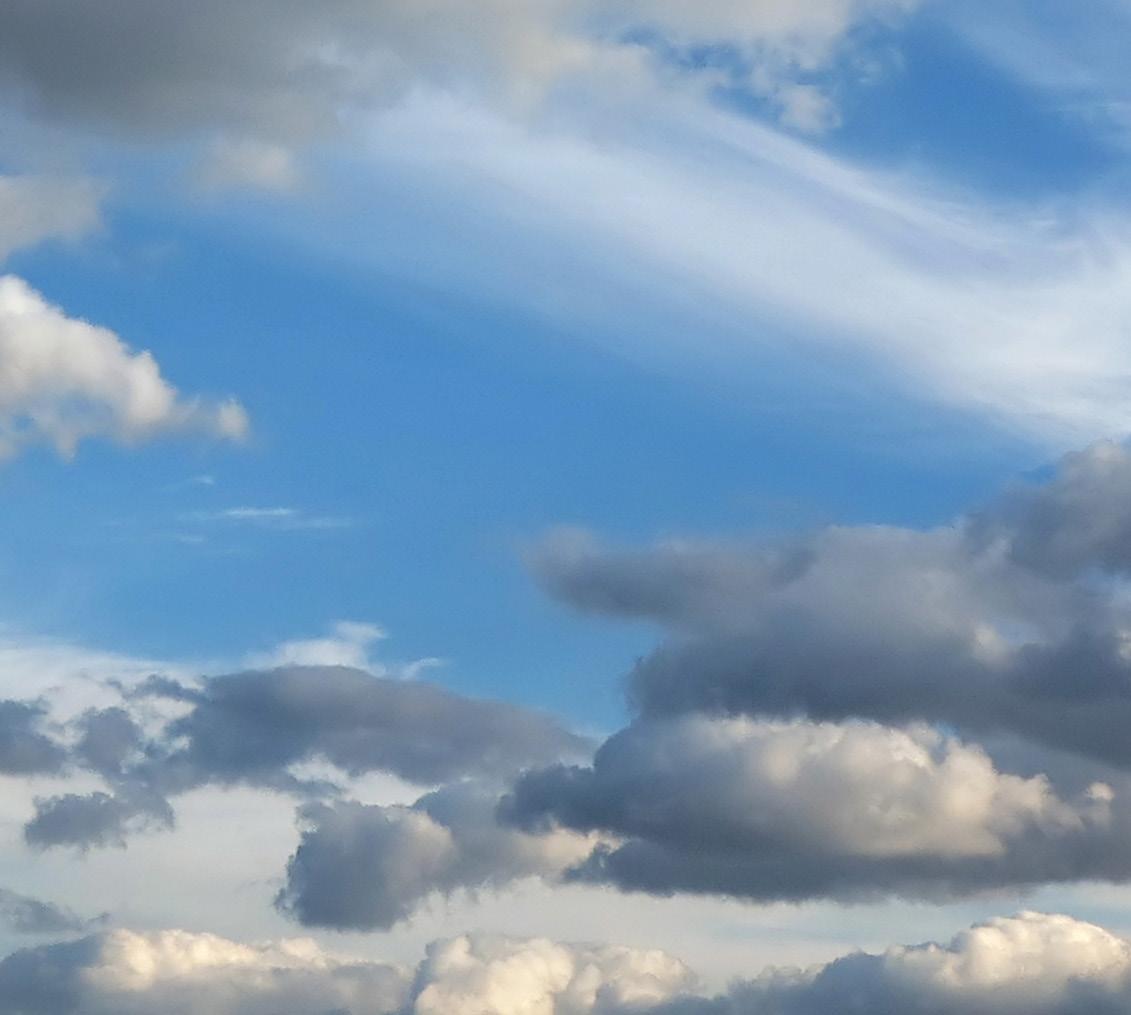
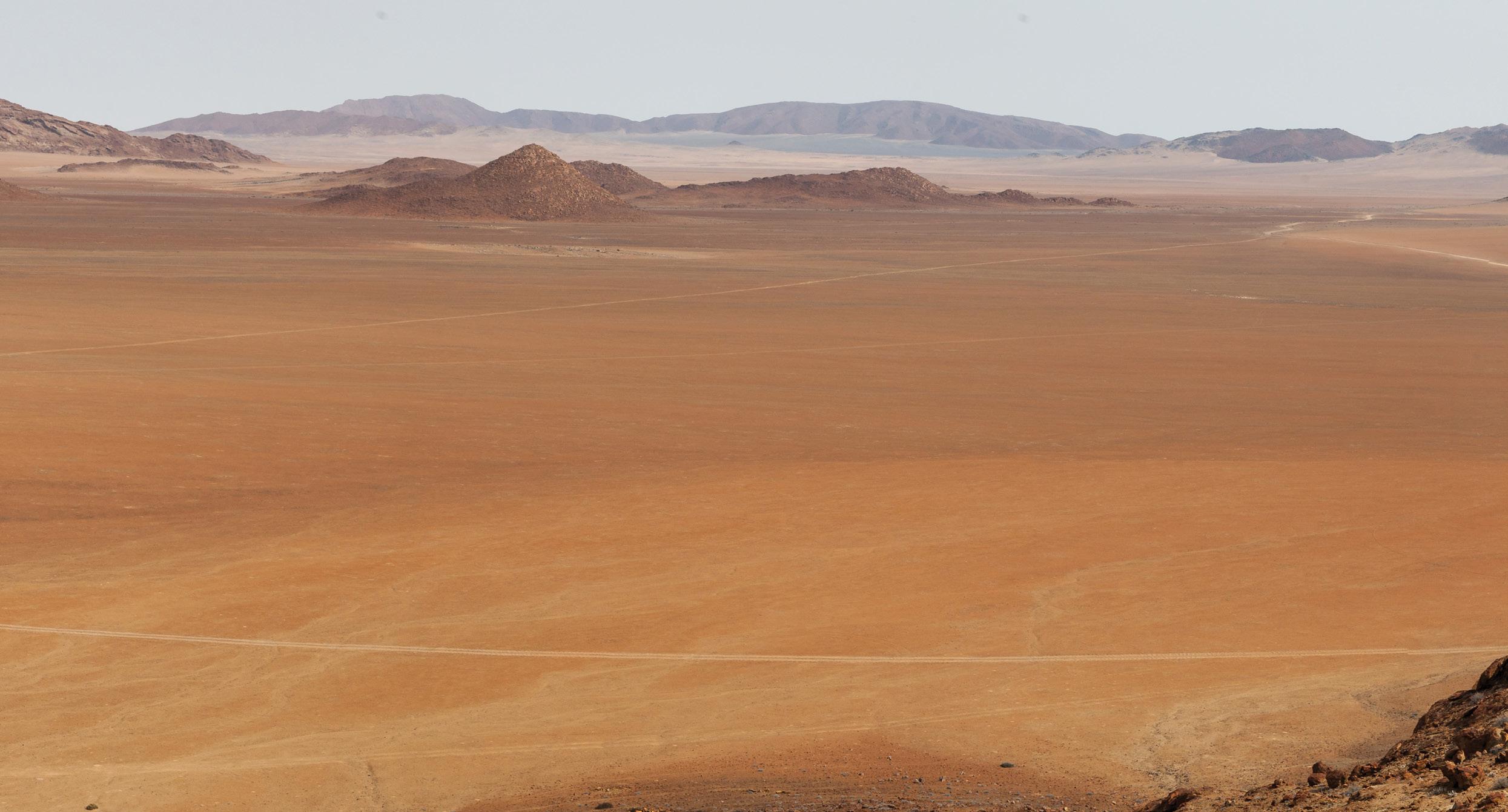

You are here
REHABILITATION APPROACH
Progressive/concurrent rehabilitation, meaning areas are rehabilitated as soon as they are no longer in use.
REHABILITATION OBJECTIVE
• Establish a safe and stable landform
Enhance vegetation establishment
• Establish a self-sustaining landscape
REHABILITATION COST PER HECTARE?
Slopes: N$ ~ 242,896.03
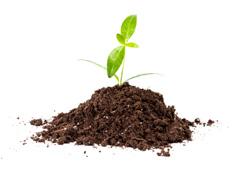
Number of trees planted
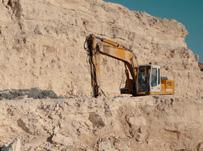
Hectares of the WRD rehabilitated
WASTE ROCK DUMP LANDFORM DESIGN
EROSION CONTROLS
Concave slope (1/4, 1/3) | Cross ripping the slope and surface | Crest and toe berms
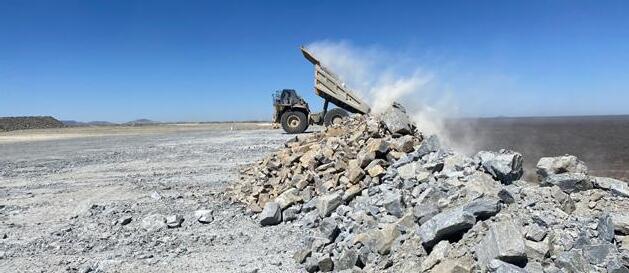
DUMPING
Material that is loaded from the pit is end-dumped on a pre-designed waste rock area.

MONITORING AND SUSTAINABILITY
The rehabilitation success is then monitored for progress and the improvements are compared to the natural undisturbed environment, until closure.
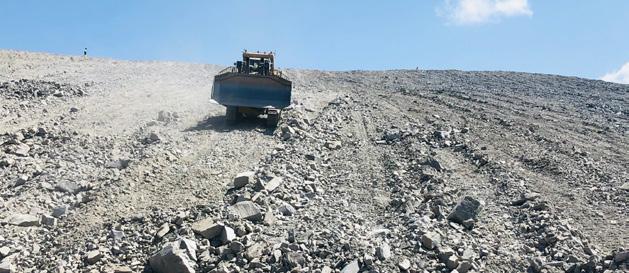
PROFILING AND SLOPING
The dumped material is then sloped to predetermined overall angles of 17 degrees to create a slightly concave slope.

REVEGETATION
Seedlings are then planted on the slope at a density of 140 trees per hectare.
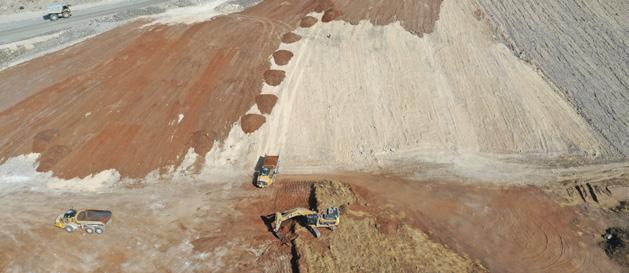
COVER APPLICATION
A 20 cm layer of calcrete is then applied, followed by a 15cm layer of topsoil.
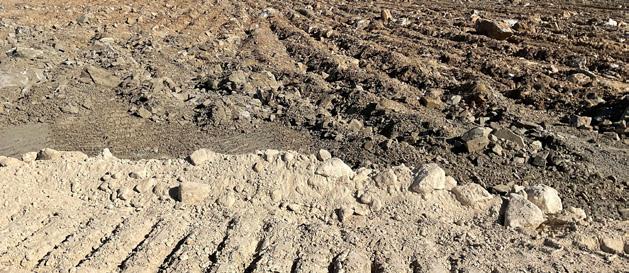
RIPPING
The surface is then cross ripped to create surface roughness and allow for water infiltration and reduce erosion.
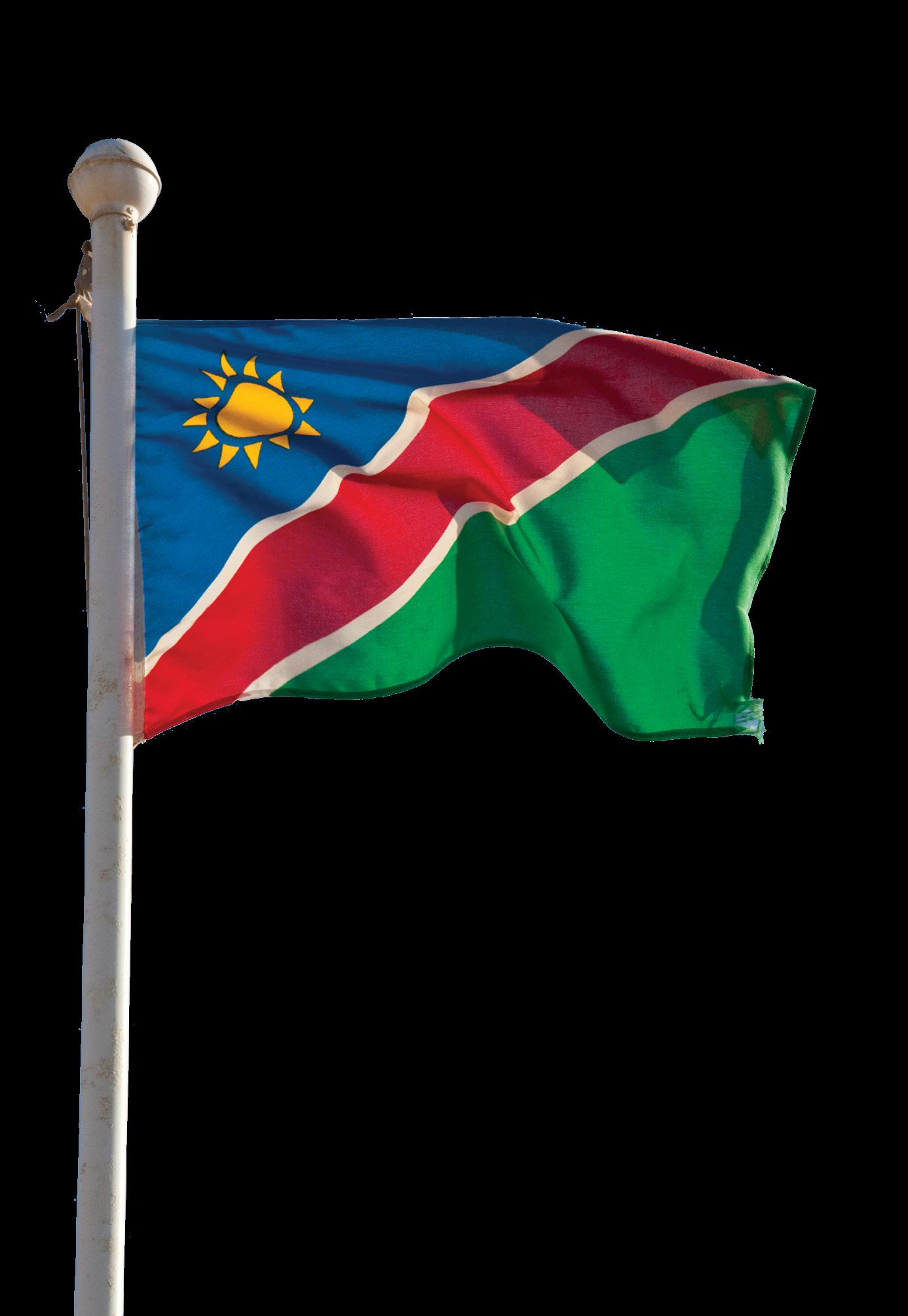

Dear Passenger,
Welcome on board this FlyNamibia flight.
As we embark together on this journey, it is with a profound sense of respect and reflection that we present to you the March 2024 edition of our inflight magazine. This issue is dedicated to commemorating the esteemed legacy of our late President, Hage G. Geingob. President Geingob's tenure was characterised by an unwavering dedication to the principles of unity, equity, and progress, principles that have shaped the course of our nation's history and its aspirations for the future.
In these pages, we pay homage to President Geingob's vision for Namibia—a vision that extended far beyond the realms of policy and governance to touch the very heart of what it means to be a nation united in diversity and purpose. This month, as we celebrate 34 years of Independence, we celebrate his legacy, as well as explore the successes of our nation through the eyes of industry leaders and everyday Namibians alike.
These achievements are not merely milestones but stepping stones toward a brighter, more inclusive future for all Namibians.
This edition, while a tribute to President Geingob, also serves as a reminder of the collective journey we are on—a journey towards building a nation that stands as a beacon of hope, unity, and prosperity. It is a journey that each of us, as members of the FlyNamibia family and as citizens of this great nation, are a part of.
We thank you for choosing to fly with us today. As you settle in for your flight, we hope that the stories and insights within these pages will inspire you and fill you with pride for the nation we are building together. On behalf of FlyNamibia, welcome aboard, and may our journey together be as enriching as the destination.
Warm regards,
The FlyNamibia TeamWe love their latest interior project, House Olympia. The pinnacle of Leon Engelbrecht Design’s capabilities is showcased in this breathtaking house renovation and complete interior makeover. Specially tailored for an international client, this project entailed creating spaces that seamlessly blend modern contemporary elegance with organic, natural accents and a touch of glamour. With locally handmade bespoke furniture, custom-made curtains, quality bed linen and other refined pieces on display, House Olympia is an exemplary illustration of the calm, warm and inviting vibes Leon Engelbrecht Design can bring to your space.
+264 81 251 2169
www.leongengelbrecht.com
30 Lazarett street, Southern Industrial, Windhoek @leonengelbrechtdesign


We love the Olive Grove Guesthouse. Located in the heart of the capital yet nestled in a quiet street, the Olive Grove Guesthouse boasts 11 rooms and a serene, homely atmosphere. Luxurious and tastefully appointed rooms – varying from standard rooms, luxury rooms and an executive suite – exude sophistication and comfort, while the on-site à la carte restaurant dishes up wholesome meals served in the guesthouse’s tranquil courtyard or cosy dining space. The Olive Grove Guesthouse offers uncomplicated, upmarket accommodation that will have you lingering a little longer.
+264 61 302 640 (Reception) | +264 61 302 641 (Reservations)
info@olivegrove-namibia.com
20 Promenaden Road, Windhoek
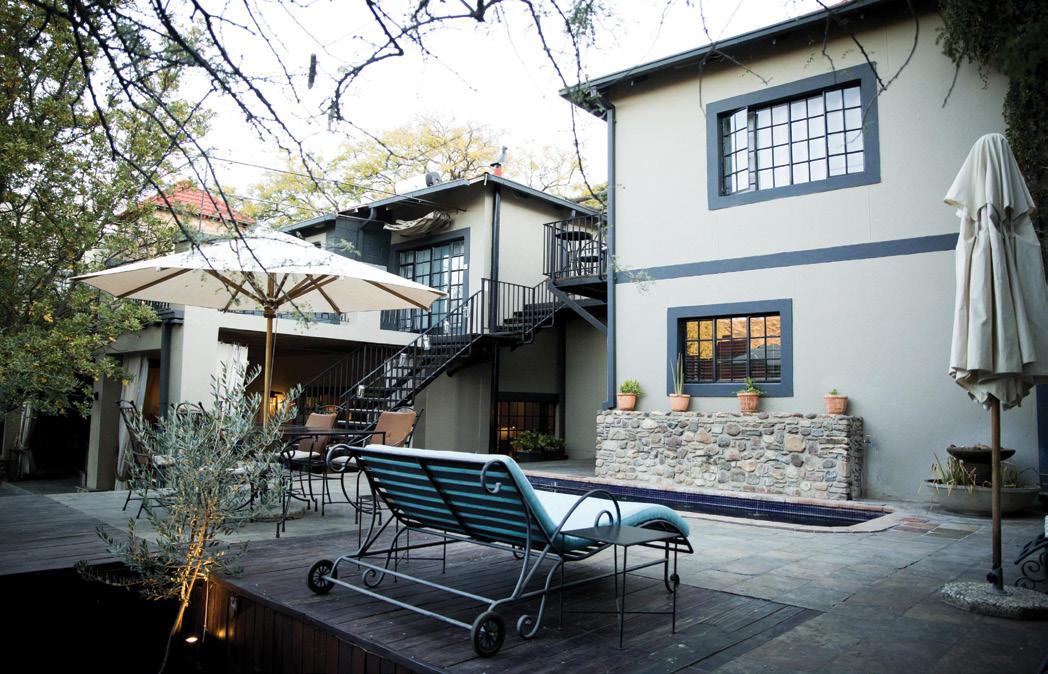

We love their holistic wellness approach. Established in November 2021 by aesthetician Hendrina Amakali, Meraki Wellness Centre embodies a vision of holistic wellness infused with authentic African traditions. Targeting the corporate world in Africa, Meraki offers a unique blend of global beauty practices and indigenous wellness traditions to address pressing mental wellness needs. As a personalised spa specialising in authentic treatments, rituals and rejuvenation, Meraki is here to redefine wellness in an African context while contributing to job creation in Namibia.
+264 81 247 8077
Meraki Wellness Centre: Unit 16, The Village, Liliencron Street, Windhoek Meraki Wellness Spa: 150 Olof Palme Street, Eros, Windhoek



We love their commitment to sensational scents. Fragrance is fundamental to the personal and professional skincare ranges from Emssence. What started as a love for essential oils quickly evolved into a love letter of natural smells synonymous with Namibia. From the Emssence PURE range comes natural scents of pomegranate, geranium, tea tree and rooibos. The Emssence Bespoke Amenities range includes hints of !Nara melon, Kigelia and sweet marula fruits. Through the scents of our flora and other natural fragrances, Emssence embodies Namibian skincare for Namibian skin.
For orders, email admin@emssence.com or WhatsApp +264 81 170 1519
Shop Emssence at Maerua Superspar's health section
Are you a Nam or SA based lifestyle brand?
List your label with us for only N$1,000 per month for 6 months | fly@venture.com.na

Born on 3 August 1941, Hage Gottfried Geingob grew up on a farm south of Outjo and after completing his schooling at Outjo he enrolled at the Augustineum Teacher Training College at Okahandja in 1958. He was expelled two years later after he participated in a protest about the poor quality of education, but was readmitted and completed the course in 1961. He then took up a post as a teacher in Tsumeb, but resigned shortly afterwards as he detested the system of Bantu education.
The young Geingob joined SWAPO in 1962 and went into exile to what was then known as Bechuanaland (Botswana) in the same year. During his time in Bechuanaland, Geingob served as assistant SWAPO representative, before making his way to the United States of America. He was appointed as a petitioner to the United Nations in New York in 1964 and gained experience in international diplomacy while he campaigned for a free and independent Namibia with other petitioners.
Geingob was appointed as a political affairs officer at the Council of Namibia in 1972 and as the first director of the United Nations Institute for Namibia (UNIN) in Lusaka, Zambia, in 1975. At UNIN, which was established to educate and train Namibians in preparation for independence, his training as a teacher stood him in good stead.
After spending nearly three decades in exile, Geingob returned to Namibia on 18 June 1989. He was appointed as SWAPO’s director of elections and steered the party to election victory in the 1989 elections.
of Trade and Industry in 2008. He held the position until 2012 when he was promoted to Prime Minister, a position he held until 2015. In the November 2014 elections, Geingob received an overwhelming majority and was sworn in as the country’s third president on 21 March 2015. He again won the 2019 presidential vote, but with a much-reduced majority.
Geingob conceived the concept “The Namibian House” to promote the inclusivity of all Namibians and was the architect of the Harambee Prosperity Plan I (2016-2020) and Harambee Prosperity Plan II (2021 to 2025) which aimed to complement the government’s long-term national goals for prosperity.
As President, he promoted Namibia tirelessly as a safe investment country at numerous global international meetings and established the Namibia Investment Promotion and Development Board as an autonomous body in the Office of the President.
On the global stage, he proved to be an astute statesman and a skilful negotiator which earned him the respect of world leaders. Geingob was a champion of press freedom and repeatedly reiterated his personal and his administration’s commitment to press freedom.
On the global stage, he proved to be an astute statesman and a skilful negotiator which earned him the respect of world leaders.
Following the elections, he was elected as the chair of the Constituent Assembly which was tasked to draw up the country’s constitution and determine a date for Namibia’s independence. Despite the distrust and ideological differences between SWAPO and the other political parties, he used his negotiation skills to produce Namibia’s constitution in a record 80 days. The constitution, which was adopted on 9 February 1990, has been hailed as one of the most progressive in the world.
When Geingob was appointed as Namibia’s first prime minister in 1990, he proved to be an able administrator. He held the position until 2002, when he fell out of favour with then President Sam Nujoma and took up the position of executive secretary of the Global Coalition for Africa in Washington and returned to Namibia in 2004.
Geingob returned to active politics when Namibia’s second President, Hifikepunye Pohamba, appointed him as Minister
He was committed to fighting corruption and dealt decisively with two ministers implicated in the Fishrot saga, as well as other ministers involved in corruption. He has been credited with being instrumental in the creation of the Anti-Corruption Commission and as recently as December 2023, he called on Namibians to ensure that the country is corruption-free.
His presidency was not without challenges, though. The country faced its worst drought in human memory between 2016 and 2019, resulting in widespread food insecurity. He also had to deal with the devastating effect of the Covid-19 pandemic and global economic uncertainties, as well as bitter succession battles within the SWAPO Party.
Despite all these challenges, Geingob worked tirelessly towards delivering prosperity for all Namibians. He will also be remembered for his infectious chuckle, off-the-cuff comments and his dancing skills whenever the occasion arose. He was an avid sports supporter and served as patron of the Namibia Football Association and the Namibia Rugby Union which renamed the South West Stadium to the Hage Geingob Stadium. His name will also continue to be remembered by football fans when the annual Dr Hage Geingob Cup is played.
Willie Olivier

Nestled on the southwestern coast of Africa, Namibia emerges as a shining example of progress and stability in a continent brimming with potential. With its strategic location acting as a vital trade artery to landlocked neighbours and beyond, Namibia has not only capitalised on its geographical advantage but has also embraced policies and initiatives that underscore its commitment to economic growth and sustainable development.
Ranked among the world’s most politically stable countries, Namibia boasts 34 years of unwavering democracy and peace. This stability is a cornerstone for the nation’s efforts in attracting and retaining investments. The government’s open-arms approach to foreign investment, underpinned by a robust policy environment and a vibrant, English-speaking workforce, underscores its dedication to national development for the benefit of its people.
With a GDP of US$12.3 billion in 2022 and a per capita income reflecting its economic strides, Namibia’s economy is an exportdriven force in the region. Mining, tourism, fishing and agriculture stand as the pillars of its economic landscape, contributing significantly to its growth. The nation’s export portfolio, dominated by precious metals, uranium and fish, together with a sophisticated financial sector and advanced infrastructure, positions Namibia as a competitive player on the global stage.
Namibia’s Walvis Bay Port is a testament to its strategic significance, offering congestion-free access and substantial time saving for shipping lines to Europe and the Americas. This advantage is further bolstered by Namibia’s participation in a plethora of trade agreements, including the African Continental Free Trade Area (AfCFTA) and the Southern African Development Community (SADC), opening doors to a market of 330 million people.
Recognising the cyclical nature of its economy, Namibia has embarked on a diversification journey, targeting sectors with high growth potential. The country’s abundant natural resources, particularly in solar and wind energy, are being leveraged to position Namibia as a future green hydrogen producer. This initiative not only aims at reducing dependency on commodity price fluctuations but also at fostering sustainable economic development.
Namibia’s infrastructure, notably its quality road network –rated the best in Africa for five consecutive years – alongside its efficient communication systems, highlights the country’s readiness for business and investment. Furthermore, Namibia’s accolades in governance, including rankings in freedom of the press, gender equality and transparency, reflect its commitment to creating an environment conducive to growth and equality.
From renewable energy and the food industry to mining and tourism, Namibia presents a landscape rich with investment opportunities. The nation’s policy towards economic diversification, coupled with its strategic trade agreements and a welcoming investment climate, makes Namibia not just a country to watch but one to actively engage with.
Namibia’s journey is one of resilience, strategic growth and an unwavering commitment to its people and the planet. As it stands on the cusp of becoming a continental leader in green economy and beyond, Namibia is not just celebrating its successes but also paving the way for a prosperity-filled and sustainable future. In Namibia, the promise of Africa finds one of its fullest expressions, offering lessons in stability, growth and opportunity for the world.









At the threshold of global recognition, Namibia is acknowledged as a haven by visitors, often viewed as a utopia. Despite the international acclaim, locals sometimes overlook the enchantment inherent to their magical land.
Having been launched on 15 February, TIMELESS TAPESTRY, the first exhibition of 2024 at BELLHAUS Atelier & Galerie, seeks to weave back together our local hearts and the place we call home. Our connection to this land is as intricate as a handloom. Perhaps the only way to reinvigorate dormant patriotism is to allow outsiders to show us how truly wonderful Namibia is.
Thirteen artists from outside Namibia were invited to create and contribute their unique impression of the country through mixed mediums. The artists showcasing at TIMELESS TAPESTRY are Amy Ayanda, ANHA, Cara Saven, David Ross, Gregg Price, John Bauer, Lucie de Moyencourt, Marilila Kyrtata, Marlene Neumann, Michael Chandler, Renée Rossouw, Something Good Studio and Wanderland. Until Saturday, 16 March, the walls and nooks of the Bell Street gallery will be an open love letter to Namibia.
Curator and owner of BELLHAUS Atelier & Galerie, Andrea Behnsen, says, “I wanted artists outside of Namibia to remind us that we live in a remarkable, multifaceted country. Visitors know this, but it’s almost like Namibians still need convincing.”
inspired by the humble rock and its role as a cultural fossil record, Chandler illustrates a series of nine paintings through observing the nuances of different angles of a rock. He hopes viewers, particularly Namibians, will see that there is so much to love and celebrate about Namibia because of its simplicity, not at the cost of it.
Included in the roster of international artists is renowned ceramicist John Bauer. Three of his signature matchbox tile mosaics showcase the essence of Namibia in uncanny colour palettes.
For Bauer, the magic of Namibia lies in its endless space. “It is as if all that space makes more room in your soul,” says the artist.
Cara Saven, who is best known for Cara Saven Wall Design, collaborated under CS4D with curator Behnsen on table linen that injects contemporary flair to the symbols we associate with home – a marula fruit, the Namib Desert beetle (illustrated by Marilila Kyrtata from Greece) and coastal pelicans. The wholesome togetherness around a table where the tablecloth or napkins stir up conversations about our unique country is what TIMELESS TAPESTRY is all about.
I wanted artists outside of Namibia to remind us that we live in a remarkable, multifaceted country.
Behnsen hand-picked the artists showcasing in the TIMELESS TAPESTRY and in many cases collaborated on original work. Interestingly, many artists chose to depart from their usual mediums. The subject, Namibia, called for it!
Fine art photographer David Ross portrayed Namibia in six gravity-defying mobiles. Suspended in the gallery, the brasstoned structures seem completely weightless, their splattered feather ends dancing with the breeze like a sandstorm might if it weren’t in such a hurry.
Designer Renée Rossouw shallowly carved the country’s quintessential contrasts into wood and further defined our desert land with the use of the oryx. The result is a youthful approach to our dramatic Namib Desert, inviting uncomplicated dopamine vibes.
Michael Chandler of Chandler House, best known for painting ceramics, dabbled with oil on canvas board. Deeply
Marilila Kyrtata worked with Behnsen to develop artworks for some of the CS4D pieces, such as the footprints of a tiny beetle becoming a conversation piece on table linen. Her illustrations intricately examine the minute details of Namibia that are often overlooked.
Lucie de Moyencourt, the Cape Town-based ceramic shell artist popular for her use of bold colours, crafted unique pieces that mirror the view from a small aircraft soaring over the geological wonders from above. The lines, layers and colours, paired with the shell shape the artist is known for, perfectly depict the ancient earthen details in plain sight throughout the country.
As BELLHAUS Atelier & Galerie continuously pushes the envelope, this exhibition will feature fine art for collectors as well as more accessible works for everyday art lovers. In TIMELESS TAPESTRY, instead of looking beyond our borders for a sense of accomplishment, we take stock of what we have. We seek inspiration from our own soil and stories. Because we can only grow outward in proportion to how stable we are on the inside.



We can help

FNB is here to help you choose the right credit that best suits your needs, helping you stay in control on our digital channels, while building a healthy credit history for future opportunities.
The FNB Credit Card rewards you every time you tap, swipe or pay online for everyday purchases, and is a good backup to cover unexpected expenses. Maximise your benefits and rewards while enjoying up to 55 days interest-free on purchases made.


Testament to the resilience and forward-looking nature of Namibia’s political landscape, Namibia experienced a seamless and dignified transfer of power, underscoring the country’s commitment to stability and governance. This follows the sad and unfortunate passing of His Excellency President Hage Gottfried Geingob on Sunday, 4 February 2024 at the age of 82. Article 29 and Article 34 of the Namibian Constitution state that:
(4) If a President dies, resigns or is removed from office in terms of this Constitution, the vacant office of President shall be filled for the unexpired period thereof as follows:
(a) if the vacancy occurs not more than one (1) year before the date on which Presidential elections are required to be held, the vacancy shall be filled in accordance with the provisions of Article 34 hereof;
(b) if the vacancy occurs more than one (1) year before the date on which Presidential elections are required to be held, an election for the President shall be held in accordance with the provisions of Article 28 hereof within a period of ninety (90) days from the date on which the vacancy occurred, and pending such election the vacant office shall be filled in accordance with the provisions of Article 34 hereof.
(1) If the office of President becomes vacant or if the President is otherwise unable to fulfil the duties of the office, the following persons shall in the order provided for in this Sub- Article act as President for the unexpired portion of the President’s term of office or until the President is able to resume office, whichever is the earlier:
(a) the Vice President;
(b) the Prime Minister;
(c) the Deputy Prime Minister; and
solidifying the nation’s commitment to experienced leadership and the continuation of a vision for a prosperous, inclusive and forward-moving Namibia.
His Excellency President Nangolo Mbumba will serve out the remainder of the late president’s term which expires on 21 March 2025. Mbumba has announced that he has no plans to run for president.
In his acceptance speech as the new president of the Republic of Namibia, His Excellency Mbumba said, “I take on this heavy mantle, cognisant of the weight of this responsibility, to serve all the people of the Republic of Namibia with utmost dedication and commitment, in the service of all citizens of the Namibian House. I undertake to continue building on the excellent foundation established by the founding father, Dr Sam Shafiishuna Nujoma, the former president, Dr Hifikepunye Pohamba, and our beloved president, Dr Hage G. Geingob. May his soul rest in peace.”
As the late President Geingob was ineligible for reelection after having served two consecutive terms as the president of the Republic of Namibia, he selected the former Deputy Prime Minister Netumbo Nandi-Ndaitwah to run for president as a candidate of the ruling South West Africa People’s Organisation (SWAPO) party, of which she is also vice president. If she wins the election, she would be the first female president of Namibia.
I take on this heavy mantle, cognisant of the weight of this responsibility, to serve all the people of the Republic of Namibia with utmost dedication and commitment, in the service of all citizens of the Namibian House.
Accepting her role as the new vice president, Honourable NandiNdaitwah said, “We should uphold his legacy by following in his footsteps and appreciate the work he did for us during the struggle and after Namibia’s independence.”
(d) a person appointed by the President from the members of Cabinet in terms of Sub- Article (2).
The seamless transition of power to former Vice President, Honourable Nangolo Mbumba as the new president of the Republic of Namibia and to former Deputy Prime Minister and Minister of International Relations and Cooperation, Honourable Netumbo Nandi-Ndaitwah as the new vice president, showcases Namibia’s resilience in the face of adversity. It sends a powerful message to the international community about the country’s unwavering commitment to democracy, peace and sustainable development.
This transition not only exemplifies the robustness of Namibia’s institutions but also reflects the trust and confidence placed in the new president and vice president,
General elections are due to be held in Namibia in November 2024. As Namibia turns to this new chapter, the foundation is laid for a leadership that is not only capable of navigating the challenges ahead but also committed to harnessing opportunities for growth, unity and prosperity, reaffirming the nation’s adherence to constitutional protocols.
We congratulate His Excellency President Nangolo Mbumba and Honourable Vice President Netumbo Nandi-Ndaitwah on their new roles. May their tenure be marked by wisdom, integrity and unwavering dedication to the people of Namibia. We wish them success in leading the nation towards a future filled with prosperity, peace and continued democratic governance.
Maggie Forcelledo Paz

As we all remember the late President Hage Geingob, it is worth looking at his contribution to the state of the media in Namibia.
The relationship between the media and Geingob was often a bit of a mixed bag. He could be stand-offish, sometimes appearing arrogant and rude – a trait put down to his “unique sense of humour” – and his office was not always the easiest to deal with, but at the same time he did open the State House to journalists. In fact, during the Covid-19 pandemic, many journalist friends and acquaintances from elsewhere in Africa would tell me how lucky we were to have a president who not only provided regular updates, but who was prepared to allow journalists to ask questions at these briefings. While some questioned the perceived preference given to the national broadcaster, and him seemingly being much more willing to allow interviews with foreign media than their local counterparts, Geingob was without a doubt a champion of a free and pluralistic media, famously having been quoted as saying: “As long as I am given the mandate to lead this great country, the freedom of the press is guaranteed.”
A passionate advocate and cheerleader for our beautiful country, the late President Geingob understood the role that a free and independent media can play in nation building. His call for the media to report on more positive stories about Namibia was interpreted by some as a call to sugar-coat or ignore the negative, and while I most certainly hold to the dictum that a true patriot is not one who never questions the government but rather one who loves their country enough to hold the government to account, he did have a point!
Solutions journalism does not ignore the problems that exist, but rather than simply reporting on them and leaving it at that, it also investigates what is being done to solve the problem. Far from being the “soft” or “saccharine” journalism some old-school investigative journalists believe it to be, solutions journalism does not ignore the problems that exist but can instead complement and add to the coverage of problems by specifically reporting on solutions. If the government is seen to be ignoring a problem, highlighting grassroots efforts to solve the problem, or ways the same problem was solved elsewhere, allows citizens to call for greater accountability or get involved themselves. It can also embarrass officials into doing something. In a world that seems to be becoming more and more polarised, research has also shown that solutions journalism can change the conversation to be less divisive and more constructive.
While I am sure Geingob’s legacy will remain and I am not too concerned about a decline in media freedom in Namibia under his successors, I also believe that he was right when he told local journalists that “we’d miss him when he’s gone!”
As long as I am given the mandate to lead this great country, the freedom of the press is guaranteed.
As a brief and completely selfindulgent aside before I close off, my favourite memory of Dr Hage Geingob will always be the night we were having dinner with my wife’s former boss and Hage and then First Lady Monica were sitting at a neighbouring table with Nahas Angula and his wife. The boss’s young daughter wanted to go and say hello and, having been encouraged to do so, walked up to the table and gingerly interrupted their conversation. The president and his wife immediately greeted her warmly, engaged her with questions about her education and where she was going to school, and embraced her before she went off again.
The media has the very powerful ability to shape public opinion, promote democracy and good governance, influence behaviour and advance policies that guarantee a high quality of life. This is not only done through the stories they choose to highlight but the angle they choose to take. Glenn Greenwald famously quoted: “A key purpose of journalism is to provide an adversarial check on those who wield the greatest power by shining a light on what they do in the dark, and informing the public about those acts.” While this still holds true, it is also true that across the planet more and more people are turning towards so-called solutions journalism.
My second favourite is when my wife was not paying attention and bumped into him and his bodyguard walking out of the shops, but that is a story for another occasion.
Until next month, enjoy your journey.
 David Bishop
David Bishop


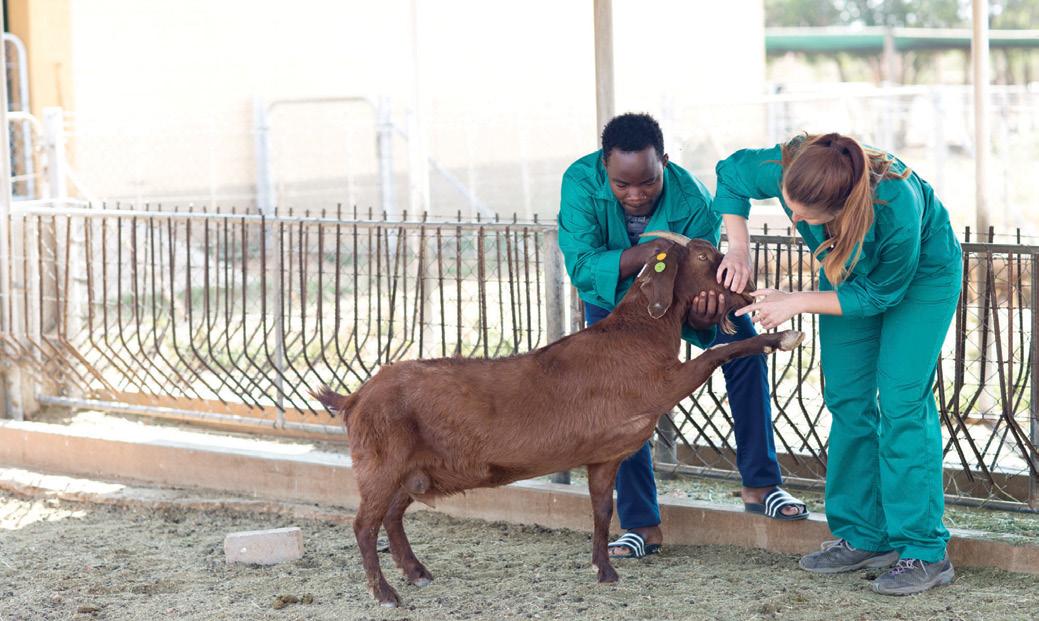
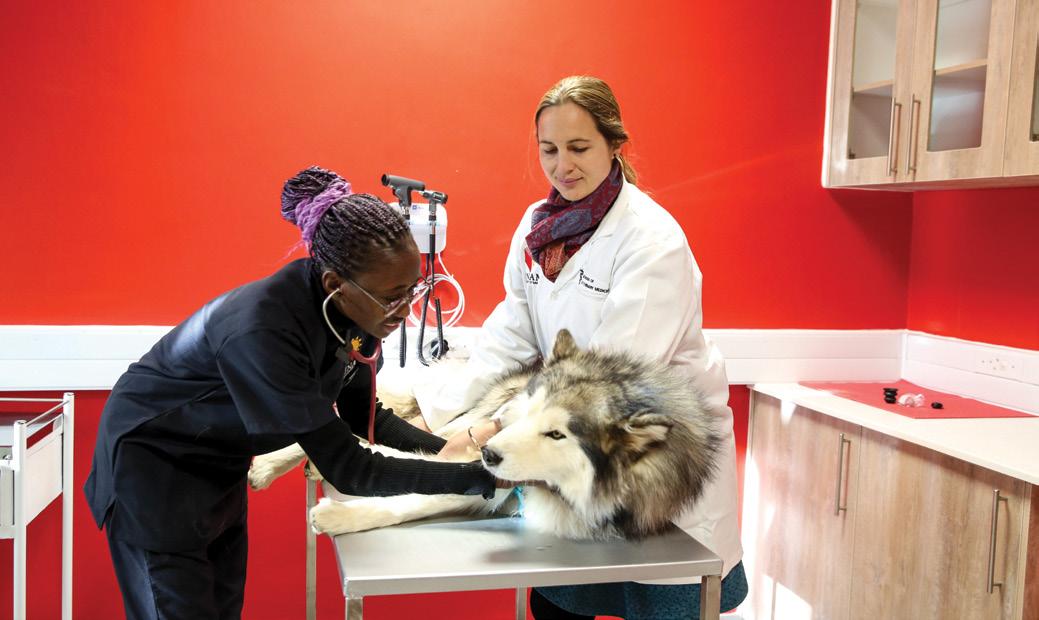
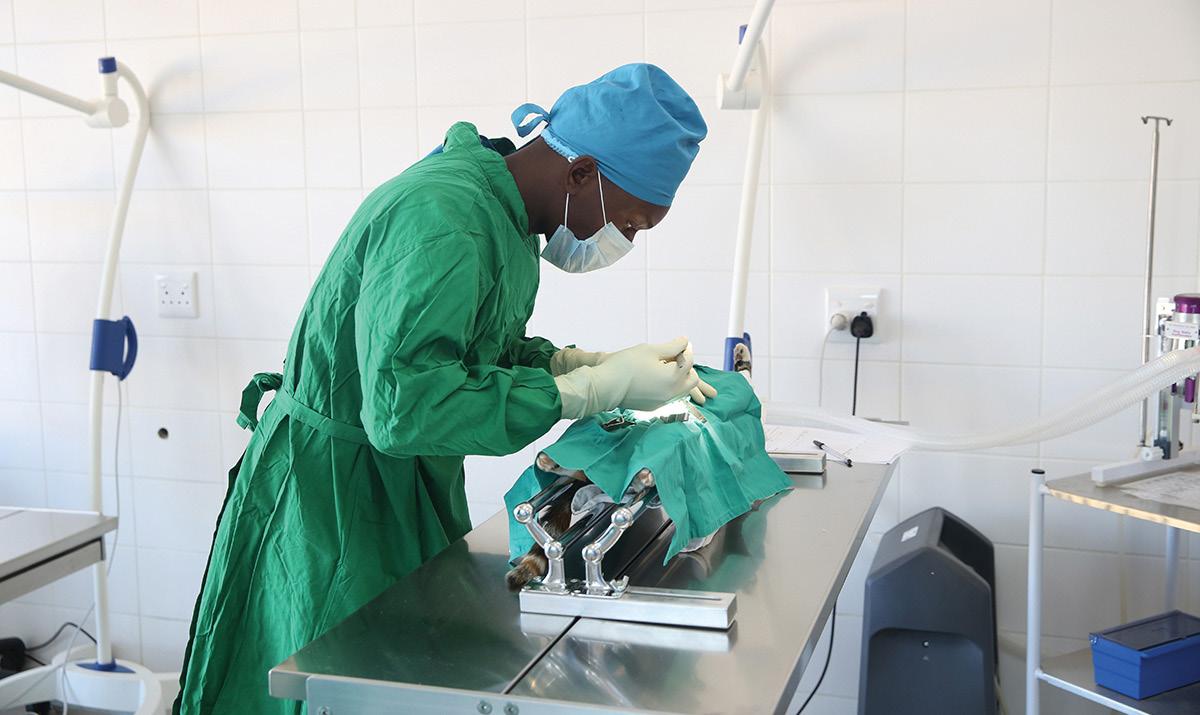
You may be surprised to learn that the work that veterinarians do affects us all, and this has nothing to do with whether you are a pet owner or not. Due to the interconnectedness of the health of animals, people and the environment, veterinarians play a critical role in environmental protection, research, food safety, public health and medical research. This is key, considering that a large percentage of all human diseases originate in animals. Some of the ways that veterinarians contribute to universal health include the protection of people from animal diseases or the safety of our food by overseeing the health and welfare of livestock.
Dr Anna Marais is the associate dean of the School of Veterinary Medicine at the University of Namibia (UNAM). “Namibia is an animal-orientated country, with a considerable portion of the GDP derived from livestock and wildlife. To effectively manage animal disease, maintain animal health, cater for our meat export market and wildlife tourism industries, as well as ensuring national safety of food of animal origin, a well-trained cadre of veterinarians is required. To this end, the University of Namibia has established a School of Veterinary Medicine,” says Dr Marais about the institution whose impressive track record is earning international accolades and regional respect.
The School of Veterinary Medicine is now in its eleventh year of operation and has a wide variety of fields of specialisation on offer, including veterinary pathology or veterinary public health. It offers students pre-clinical, paraclinical and clinical training.
What is more, students are equipped with an understanding of many animal species. From production animals such as cattle, poultry, fish and bees, to wildlife species, including critically endangered species, and right through to companion species such as horses, dogs and cats.
We are an integral part of n amibia’s development
University of Namibia (UNAM) graduates can be found all over the world. Disciplines include but are not confined to law, agriculture, finance, science, medicine, and humanities.
The University of Namibia is a premier tertiary institution, a safe and open space at which many of Namibia’s human resources have received quality training. since 1992, with student numbers that average about 30 000 a year at 12 campuses nationwide and with about 2 500 employees, it has grown to be one of the largest higher education institutions in the Southern African region.
In honour of our late president, Dr Hage Geingob, who was sometimes called Omake for the cheers he received around the country, this Omake moment story focuses on the UNAM School of Veterinary Medicine, which is proving a shining beacon in the extensive list of Namibia’s achievements.
To pick up a conversation with us on an opportunity or programme, please send us an email at marketing@unam.na or call +264 (0)61 206 3111.
Dr Marais explains that there is much for Namibians to be proud of in this story. “Before the School of Veterinary Medicine was established, the entire veterinary profession in Namibia was trained outside the country, a large proportion of whom were expatriates. We now train highly competent Namibian veterinarians in our own country.”
Situated at the UNAM Campus in Windhoek as well as at the Neudamm Campus outside Windhoek, this thriving academy has key partnerships with established Namibian and regional partners. Dr Marais explains that the school uses a distributed teaching model, where students and instructors connect in different locations. They use supplementary lecturers as well as visiting professors and experts from Namibia, neighbouring countries and abroad. The partnerships assist with what is called “Day One Competences”, which describes the knowledge and skills required of veterinary students upon graduation to ensure that they are prepared to safely practise independently. Through their extensive programme, holders of this qualification are able to work in this demanding field, applying knowledge of veterinary medicine to diagnose and treat, conduct epidemiological studies and more.
Financial MatheMaticians teachers Veterinarians Politicians agricultural economists PharMacists librarians Marketers accountants coMPuter scientist lawyers social Worker PhysiotheraPists Doctors researchers engineers artists auDitors biologists Public relations Psychologists administrators scientists statisticians lawyers teachers nurses systeMs aDMinistrators biochemists Politicians radiograPhers anaesthesiologists geologists Marine biologists linguists PerForMing artists designers journalists Pharmacists Veterinarians
What started as a stakeholder workshop in 2010 is today a fully equipped and established training facility whose curriculum is based on the guidelines for veterinary education by the World Organisation for Animal Health and benchmarked against other veterinary schools in the region, including the Universities of Pretoria, Zimbabwe, Tanzania and Zambia. The school has input and support from the Directorate of Veterinary Services and the Veterinary Association of Namibia, and is fully accredited by the Namibian Veterinary Council as well as the National Council for Higher Education of Namibia.
“The veterinary programme is a clear indication that the School of Veterinary Medicine will become a centre of excellence in the region and subregion. Already, many veterinarians who graduated from the School of Veterinary Medicine are employed or self-employed in Namibia, Botswana and South Africa, and others are pursuing higher degrees abroad,” according to Dr Marais.
Dr Marais mentions that a wide range of partners assist the school to provide their students with exposure to various fields and experiences. “Our final year students undergo an intensive core clinical rotation at the UNAM Veterinary Academic Hospital, where they are exposed to a number of medical, surgical and outpatient cases in a variety of species. The remaining extramural clinical rotations are conducted at selected state and private veterinary facilities in Namibia, private and state wildlife reserves, communal and commercial farming areas, villages in remote areas of Namibia with our Mobile Animal Clinic, export abattoirs and meat processing facilities, the SPCA and the Central Veterinary Laboratory.”
She adds, “Our clinical rotations include pathology and production animal clinical studies on our extensive and well-stocked farm, as well as the surrounding communal areas through our ambulatory clinic.”
Veterinarians are in high demand regionally and internationally, but with high standards and extensive study loads only the best will qualify. The UNAM School of Veterinary Medicine, with its impressive curriculum, extensive partnerships and support from the highest levels of government is proving itself a shining beacon for Namibia, worth cheering for.
Air traffic controllers play a crucial role in ensuring the safe and efficient movement of aircraft within controlled airspace and on the ground. These professionals use radar, communication systems and their expertise to guide planes during takeoff, landing and en-route phases, preventing collisions and maintaining order in the skies. With a high level of responsibility, air traffic controllers must stay alert, make quick decisions, and communicate effectively to ensure the smooth flow of air traffic. They provide a pivotal multifaceted role in ensuring the safety and efficiency of air travel. Their key responsibilities include collision prevention, monitoring aircraft movement and emergency response.


Air traffic controllers are the unsung heroes of the aviation industry, and their role in Namibia is no less significant. They are known for their rigorous training, high level of professionalism, and dedication to safety. They work around the clock, employing state-of-the-art technology to monitor air traffic, communicate with pilots and provide vital information about weather conditions, air routes and potential hazards. Their work ensures that every takeoff and landing is as safe as possible, thereby safeguarding the lives of passengers and crew alike.
By managing flight schedules, minimising delays and optimising air routes, air traffic controllers play a crucial role in ensuring that the aviation sector operates smoothly. This not only benefits airlines by improving turnaround times and reducing fuel consumption but also enhances the overall passenger experience by ensuring timely arrivals and departures.
The strategic location of Namibia, bordering the South Atlantic Ocean, places it on key air routes between Southern Africa and Europe, as well as connecting to other continents. This positions Namibia as a critical hub in the global air traffic network, with its air traffic controllers playing a vital role in managing the intersection of numerous international flight paths.
In addition to their day-to-day responsibilities, air traffic controllers are pivotal in emergency situations. Their expertise and calm under pressure can make the difference in critical moments, providing guidance to pilots and coordinating with emergency response teams to handle incidents with the utmost efficiency and care. Their contribution to Namibia’s aviation industry and to the safety and well-being of the flying public cannot be overstated. As ambassadors of the sky, they embody a spirit of excellence, dedication and unwavering commitment to safety. Their role is indispensable in maintaining the high standards of aviation safety and efficiency that Namibia is known for, making them true heroes of the skies.
According to the executive director of the Namibia Civil Aviation Authority (NCAA), Ms Toska Sem, the NCAA takes immense pride in their team of over 50 highly trained air traffic controllers. “These professionals are the cornerstone of the NCAA, the regulatory body operating under the Ministry of Works and Transport. The NCAA assumes a

momentous role in upholding the safety and security of civil air operations within the expanse of Namibia’s airspace, while simultaneously providing vital air navigation services to every airspace user,” says Ms Sem.
Ms Sem further emphasises that the professionalism, competence and dedication of Namibian air traffic controllers not only contribute to the protection of Namibian skies but also to the advancement of their air traffic management system. She adds that the NCAA remains steadfast in its commitment to support and empower air traffic controllers, ensuring that they have access to continuous training, cutting-edge equipment and a conducive working environment.
Tuahangauka Mbijezuva Hengari, approach radar air traffic controller, has been in the industry for 12 years. She says she always wanted to be a pilot, having been fascinated by aircraft since childhood. Hengari says the decision to become an air traffic controller was made with excellent intentions and not by chance. “Thanks to extensive exposure to the aviation industry and an internal mentor, I was exposed to the profession of air traffic controller, which is a fascinating and unusual vocation. The complexity of my chosen employment is what I value the most. As a strong-willed individual, I enjoy being challenged since it allows me to grow and realise my full potential,” says Hengari.
“The position is worthwhile to pursue because it allows me to lead aircraft to their final destination in a timely and safe manner. Of course, another advantage of having this job is the flexible working hours. As an air traffic controller, I, like most others, have reached the peak of my profession. In addition, I’d like to go more into the human factors of aviation, with a focus on Namibian aviation,” Hengari explains.
Nghidipohamba Mokaxwa, an area radar air traffic controller with 15 years’ experience in the industry, says he became an air traffic controller because it is a unique job and requires one to always think on one’s feet, “almost like playing chess”. Mokaxwa says the hours are flexible and as a shift worker one can pursue other interests. “Nothing is ever the same and you can use different methods to achieve aircraft separation and be more expeditious with your traffic. As with most people, my career goals are to climb the corporate ladder into management and become an industry expert,” says Mokaxwa. Maggie

His Excellency Dr Hage Geingob embarked on his presidency in 2015 amidst a wave of public support, having secured 86% of the presidential vote in 2014. However, with Geingob’s inauguration as the third president of Namibia, he inherited an overheated economy rapidly running out of steam. While Namibia had been through its most rapid expansion post-independence during the half-decade before President Geingob’s election, there were growing signs that this growth was faltering.
President Geingob’s tenure began with a renewed focus on addressing socio-economic disparities. Initiatives like the Harambee Prosperity Plan II (HPP II) and Vision 2030 aimed to boost growth, create jobs and improve public service delivery. While only about half of HPP II’s listed objectives have been demonstrably completed or partially achieved, the policy’s aims were informed by a rosy outlook preempted by the strong economic performance of the then recent past. While these documents focused on addressing social disparities, their success would be undermined by an impending economic correction. We keep this context in
mind as we explore the economic progress of Namibia under President Geingob’s stewardship.
The achievements of the HPP II under Geingob’s tenure include retaining Namibia’s status as the nation with the most unrestricted press in Africa, as assessed by Reporters Without Borders, the development of the Second National Anti-Corruption Strategy and Action Plan, bolstering citizen participation and engagement, strengthening security and the rule of law, the establishment of a sovereign wealth fund, support for public enterprise reform, evaluation of the existing framework for the allocation of fishing rights and mineral licences, advancements in national housing delivery, the introduction of a gender-aware policy, the expansion and enhancement of road infrastructure, as well as the enhancement of international relations.
President Geingob’s leadership impacted Namibia’s electricity sector, culminating in the transformative Modified Single Buyer (MSB) framework. This framework fosters competition and diversification in power generation, aiming to address challenges of limited supply and accessibility. Several key initiatives undertaken during his presidency stand out as instrumental in enabling the MSB framework.
Firstly, the 2018 development of the Independent Power Producer (IPP) framework opened doors for private companies to generate and sell electricity directly to the grid, independent of the state-owned power utility. This unlocked opportunities for renewable energy investment and diversified the power mix.
Secondly, crucial legislative changes paved the way for the introduction of the MSB framework. The National Electricity Sector Policy of 2017 laid the government’s vision for a competitive market, while the Electricity Amendment Act of 2015 provided the legal foundation for licensing IPPs and electricity traders. Further refinements came through the regulations on electricity trading (2018) and NamPower’s market participation rules (2019), establishing the rules and procedures for market participation under the MSB framework. These advancements under President Geingob’s leadership have irrevocably transformed Namibia’s electricity sector towards a more open and competitive landscape. The MSB framework, empowered by these reforms, is poised to attract investment, promote renewable energy generation, and ultimately contribute to a brighter future for all Namibians by ensuring increased electricity supply and accessibility.
President Geingob championed the burgeoning green hydrogen sector in Namibia, enacting multiple initiatives and fostering crucial collaborations. He established the High-Level Panel on the Namibian Economy (HLPNE) which identified green hydrogen as a potential growth industry. He then further drove the establishment of the Green Hydrogen Council (GHC), encompassing both public and private entities to act as a catalyst for green hydrogen growth. President Geingob soon realised the need for the establishment of a body with more authority and implementation powers than the HLPNE, which led to the creation of the Namibia Investment Promotion and Development Board (NIPDB).
Born in 2021, the NIPDB marked a strategic shift in economic policy development. In attracting major investments in green hydrogen and manufacturing, the NIPDB has secured over N$60 billion in pledges and empowered over 1,000 MSMEs through initiatives like Know2Grow. Its “one-stop shop” approach and online platforms further simplify the investor experience. By nurturing youth entrepreneurship and supporting MSMEs, the NIPDB paves the way for a more inclusive and diversified economy. While definitive impact requires long-term assessment, the NIPDB’s early accomplishments paint a promising picture for Namibia’s economic future.
President Geingob further led the establishment of the Southern Corridor Development Initiative (SCDI) – an initiative that aims to transform the ||Karas Region into a hub for large-scale green hydrogen production, attracting international investment and creating jobs. By establishing a dedicated export corridor and fostering development in complementary sectors like tourism and manufacturing, the SCDI aspires to unlock the region’s full economic potential,
leading to sustainable growth and improved quality of life for its residents.
Beyond these key contributions, Geingob’s commitment extended to collaboration with Germany on a green hydrogen corridor connecting Namibia and Europe, the launch of the National Green Hydrogen Strategy in 2022 outlining a roadmap for the sector’s advancement, the creation of a dedicated green hydrogen office within the Ministry of Mines and Energy, and the establishment of the Green Hydrogen Fund to provide financial support.
The late president had a profound commitment to serving the needs of the populace. He established the Hage Geingob Endowment Fund, an initiative aimed at assisting individuals lacking financial resources to pursue further education, as well as those enduring severe poverty, by providing financial assistance and scholarship opportunities. Numerous testimonials attest to Geingob’s accessibility and willingness to engage directly with individuals, a rarity among public figures of his stature. His approachability extended to individuals who could readily communicate with him through personal messages, a gesture highly uncommon in similar contexts.
However, amidst these achievements, President Geingob’s administration struggled to alleviate unemployment and poverty with the Labour Force Report in 2018 reporting an increase from 27.9% in 2014 to 33.4% in 2018. As the economy stagnated after 2015, the government took various measures to curtail growth in its expenditure, such as freezing vacant positions. The fiscal consolidation measures taken also resulted in a sharp drop in capital investment by the government, which hampered private sector industries reliant on expenditures such as construction. The tightening economic conditions were further exacerbated by a prolonged drought which contributed to increased poverty. The incidence of poverty among Namibians – gauged by access to basic necessities such as clean water, food, medical care, cooking fuel and financial income – increased from 5% in 2014 to 22% in 2021, according to Survey Warehouse.
Economic conditions stagnated under President Geingob’s administration, but would have likely done so under the leadership of most. The scene was set for a rapid contraction in foreign direct investment and tighter credit conditions even before the late president’s tenure began. Factor in the occurrence of unpredictable events, such as a long period of drought and a global pandemic, and it becomes obvious that the economic stagnation that has been pervasive in Namibia over much of the last decade make the achievements of the period all the more notable. During this period of sadness following the president’s passing, we wish to highlight the abovementioned progress, and encourage future leadership to build upon the foundation laid by a man who was instrumental in drafting the very constitution upon which so much of Namibia’s significant progress since independence has depended.
Angelique Bock Research Analyst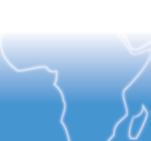
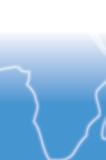






IJG believes in tailoring their services to a client’s personal and business needs. For more information, visit www.ijg.net
 NETWORK
NETWORK


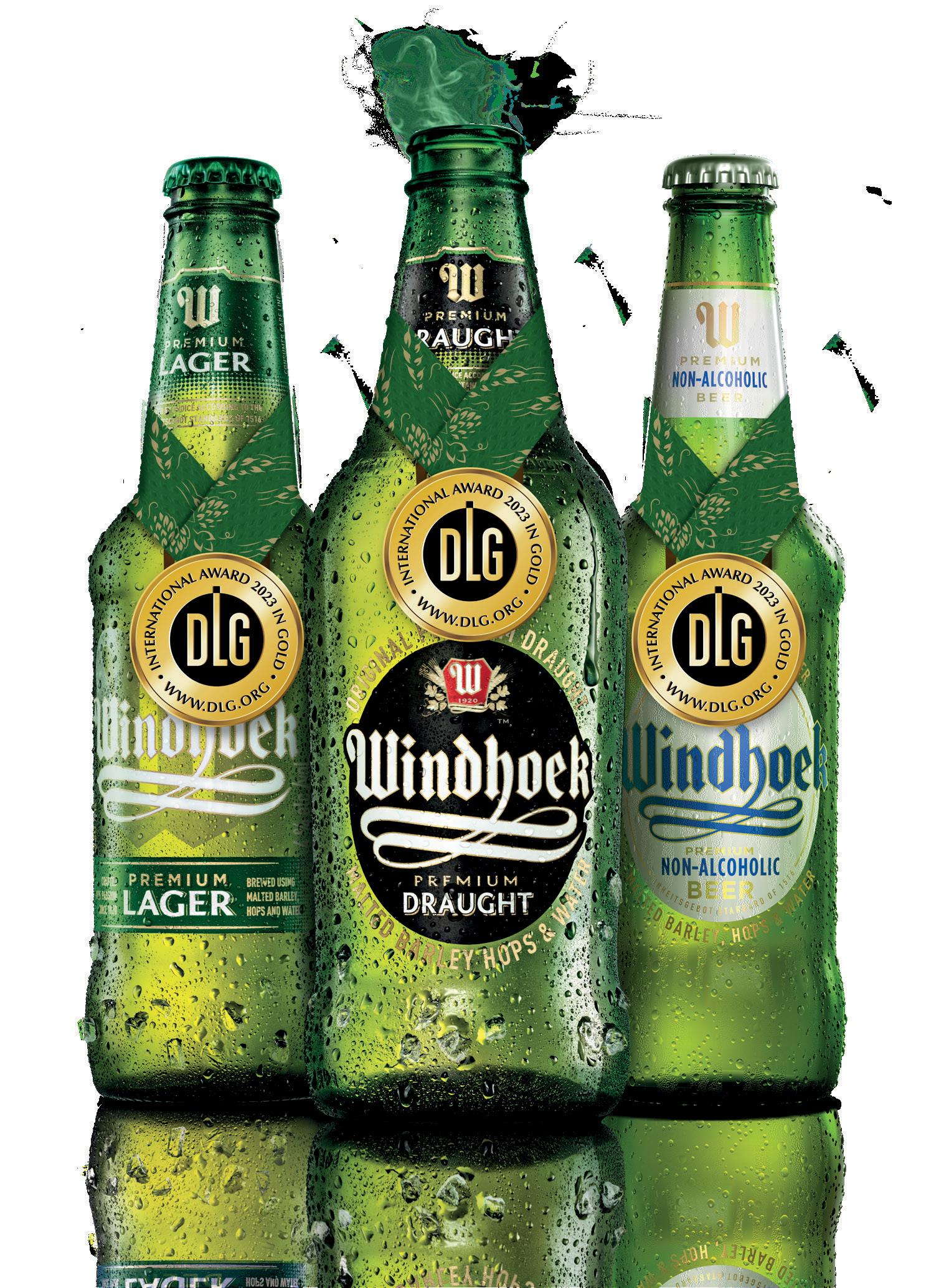
Grief is an intricate and multifaceted emotion, often changing like the waves of the ocean, from morning to night. When it comes to children, navigating these waters of loss can be particularly daunting. Children experience grief differently from adults and understanding these nuances is crucial in providing the support they need during challenging times. As a parent, you cannot protect your child from the pain of loss, but you can help them feel safe.
The experience of grief in children can stem from various sources, including the loss of a loved one, divorce, separation, relocation, being pushed out of a friendship group, or the passing of a pet. Regardless of the cause, the impact can be profound and enduring if not addressed appropriately. One of the fundamental differences between adults and children in dealing with grief lies in their understanding of death and loss. Young children may struggle to grasp the permanence of death, often exhibiting confusion or denial. They may ask repetitive questions or express their belief that the pet or person will return, leading to moments of frustration for caregivers who may find it challenging to explain the finality of death, especially when they are also dealing with the loss themselves.
Children’s grief may manifest in various behavioural and emotional changes. Some children may become withdrawn, exhibiting poor signs of sadness, anxiety or depression. Others may act out through aggression, irritability or regression to earlier stages of development such as bedwetting, thumb-sucking or the development of new fears and phobias. These changes are typically a child’s way of expressing their inner turmoil and attempting to seek comfort, reassurance and control.
The age and developmental stage of a child plays a significant role in how they express grief. Younger children may struggle to verbalise their feelings and rely more on non-verbal methods of expression, such as playing, as a defence mechanism to prevent them from becoming overwhelmed. Older children and adolescents may have a better grasp of the events but may still find it challenging to navigate these emotions – a situation which tends to lead to isolation or alienation from their peers and family or acting aggressive and angry towards someone else, other than the deceased. Self-harming behaviours may also be part of trying to control the pain.
It is hard to know how a child will react to death. The aim – not only in the event of a traumatic incident but when dealing with children in general – is to strive towards creating a safe and supportive environment where emotions can be shared and experienced, without shame or guilt. Encouraging open communication, validating their feelings rather than dismissing it and providing age-appropriate explanations of what happened can assist in the processing of their feelings.
Try not to volunteer too much information, as this might be overwhelming. If you do share information, do so honestly and clearly to avoid later resentment and confusion. When discussing death, it is important to not use euphemisms (for example “Gran went to sleep”), as children can be extremely literal in their understanding. This can lead to other fears such as being scared of going to bed or being expectant of the deceased waking up. This is also likely to interfere with the development of emotional regulation and healthy coping mechanisms.
Whether or not to attend the funeral is a personal decision that depends entirely on you and your child. Funerals can be helpful for closure, but some children are simply not ready for such an intense experience. Never force a child to attend a funeral. If they would like to attend, prepare them well for what they are likely to see and feel. Keep in mind that even the most well-prepared children are still just that – children – and their behaviours can be unpredictable. If you decide against taking them to the funeral, there are other ways to say goodbye such as planting a tree, sharing stories or releasing flowers into the ocean as alternatives to closure.
Maintaining rituals and routines can provide a sense of stability and comfort during times of upheaval. Sticking to regular bedtime routines and attending typical extracurricular activities can help in maintaining a sense of normalcy. Seeking professional support from a therapist may be beneficial for those who are unable to cope and where behaviours are no longer typical.
Be mindful of not ignoring or suppressing your own grief, as it tends to lead to uncontrollable and explosive reactions. It is important for us to share and show our emotions as it reassures our children that feeling sad or upset is normal and teaches healthy ways of dealing with intense emotions.
“Grief is like the ocean; it comes on waves ebbing and flowing. Sometimes the water is calm and sometimes it is overwhelming. All we can do is to learn to swim.” – Vicki Harrison.
Tragically, grief is an inevitable part of life and our children are not immune to its impact. As parents, we can only aim to act as life vests during times of uncertainty.
Jana Vermeulen


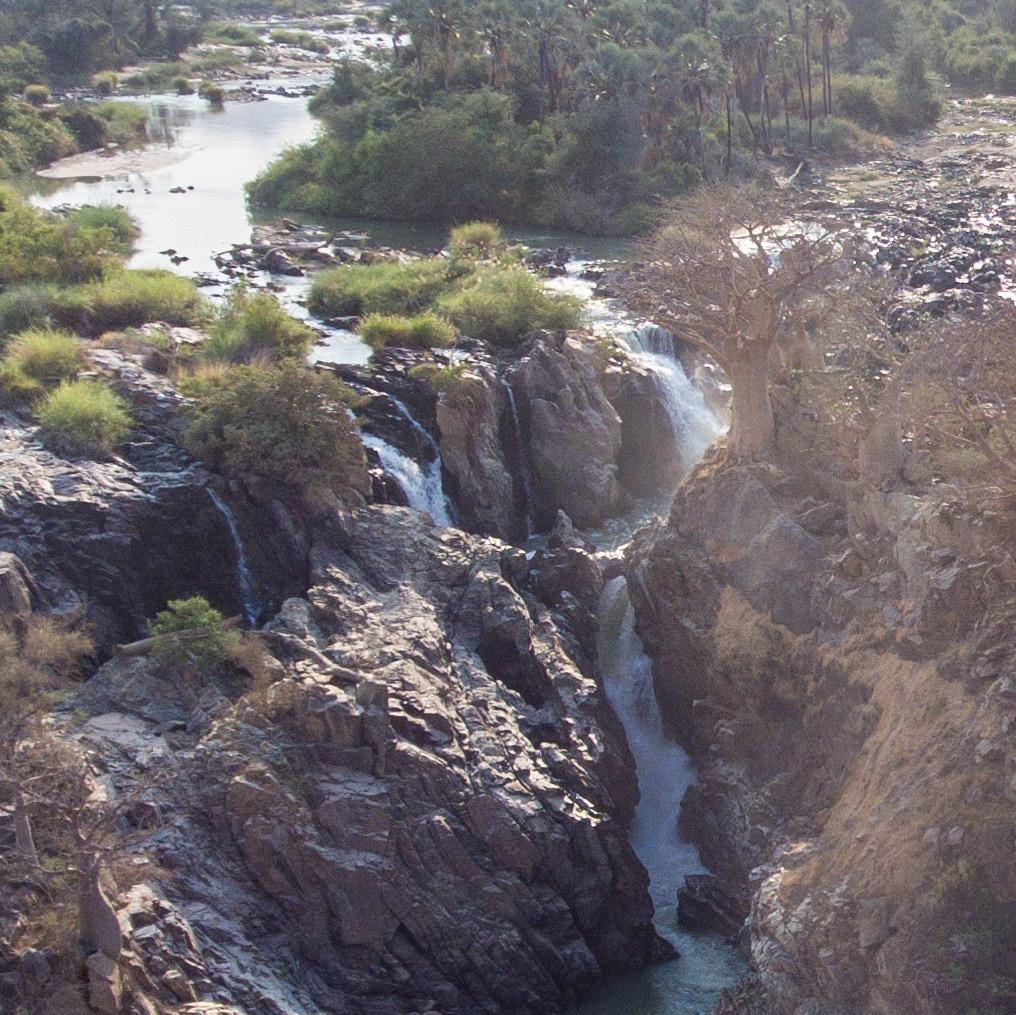

Kaokoland extends from the Kunene River southwards across a sparsely populated and harsh environment down to the Hoanib River. The area holds a special allure for lovers of remote and wild places to negotiate its challenging and rugged terrain in fourwheel-drive vehicles. Attractions include the desert-adapted elephants, scattered Himba settlements, the impressive Epupa Falls, off the beaten track destinations such as the expansive Marienfluss and Hartmann valleys, the wild and beautiful Khowarib Schlucht, and Swartbooisdrift, site of a Dorslandtrekker monument.
The African elephant, a strong and majestic giant, is a key feature on the plains, in the forest and across other landscapes in Africa. In remote parts of north-western Namibia these gentle giants have adapted to survive in harsh desert conditions.
In Kaokoland the desert-adapted elephant’s home ranges cover as much as 3 000 km2, with the animals trekking up to 200 km in search of water. It was thought initially that these elephants were a different species to the African elephant, Loxodonta africana, because they have longer legs, are taller and have larger feet. However, because they have less to eat than their Etosha counterparts, they don’t carry the same body mass, and therefore appear to be taller and have longer legs. But they do have larger feet, an environmental adaptation caused by walking primarily on soft sand all their lives.
Kaokoland’s desert-adapted elephants rotate the home ranges that they occupy as the seasons change to where food and water can be found. Herds are led by a matriarch, who is usually the oldest female and has accumulated as much as 30 years’ experience of the climatic conditions in her home range. By definition,desert-dwelling elephants occupy an arid habitat for at least part of the year and have special behavioural characteristics, large annual and seasonal ranges, and a social structure and daily activities suited to an arid environment. When feeding, these denizens of the desert take far greater care than their relatives in Etosha. They hardly ever fell trees, break fewer branches and debark much less than other elephants. Whereas adult elephants on average drink between 100–200 litres of water a day, in Kaokoland they drink only once every three or four days. During droughts they dig deep, narrow holes (gorras) in dry riverbeds with their tusks, trunk and feet to find water.
Another curiosity of the area is the remarkable desertadapted lion. With approximately 140 of their kind left, the desert lions are a rare group of carnivores that have adapted to survive in one of the harshest, most unforgiving landscapes on earth. With their numbers dwindling as poaching and human encroachment threaten their future, sightings are
few and far between. For more information on the desert lions of the Namib visit www.desertlion.info
With its scenically beautiful surroundings, Epupa is one of Namibia’s prime tourist destinations. The falls are a series of cascades where the Kunene River drops a total of 60 metres over a distance of about 1.5 km, separating into a multitude of channels and forming a myriad of rock pools. Enhanced by richly coloured rock walls, a variety of trees including wild figs, baobabs and waving makalani palms, spectacular sunsets and perennially flowing waters, the Epupa area offers much to see, do and experience.
Bird-watching is rewarding, especially for the rare Rufoustailed Palm Thrush. Also seen are Bee-eaters, African Fish Eagles, Kingfishers ranging from the Giant to the tiny Malachite Kingfisher, Rosy-faced Lovebirds, Paradise Flycatchers, Turacos, Bulbuls, Hornbills and Rollers. Scattered settlements of Himba are an especially interesting feature of the area.
Although officially declared as a town only at the end of 2000, Opuwo has long acted as the capital of the Kunene Region, and as the gateway to Epupa Falls and the land of the Himba people. The town itself doesn’t offer much for the tourist, except in the form of hand-made jewellery and other crafts, which can be found at street stalls and at the open market. The Kunene Craft Centre is also a good place to stock up on souvenirs from the area. Opuwo has well-stocked grocery shops, Internet cafés, a post office, banks, fuel stations, a hospital, and everything else a traveller might need. Opuwo is connected to Kamanjab and Windhoek by a tarred road that is in excellent condition. There’s an airfield in town, managed by the Opuwo Country Hotel.
Find more Namibian travel inspiration at www.thisisnamibia.com. Follow @thisis_namibia on Facebook and Instagram for extraordinary Namibia travel stories.
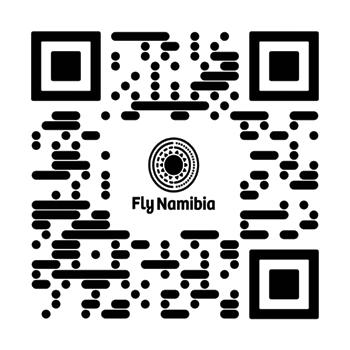

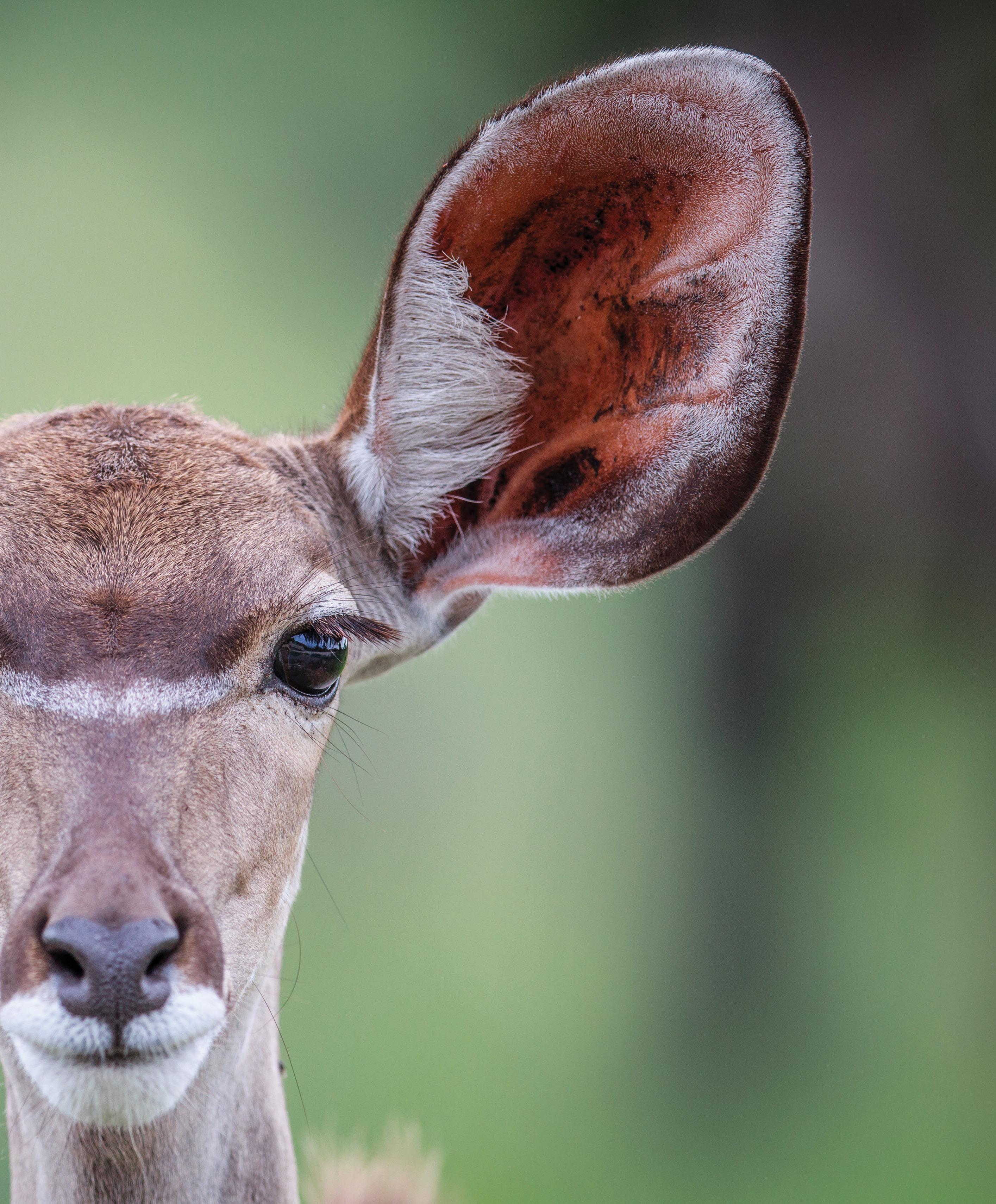



In Namibia, a country celebrated for its breathtaking landscapes and robust natural resources, agriculture stands as a pivotal industry that sustains its economy and feeds its people. With approximately 70% of its population relying directly or indirectly on agriculture, this sector is more than just a means of livelihood; it is the lifeblood of the nation. As we delve into the fabric of Namibian agriculture, we uncover a story of resilience, innovation and strategic growth that underpins the country’s future.
Namibia’s agricultural landscape is a tale of two sectors: the commercial and the informal. The commercial sector, characterised by its efficiency and scale, is complemented by the vast informal sector, where subsistence farming paints a picture of a nation deeply connected to its roots. This dual nature ensures not only the survival of a significant portion of the population but also contributes just under 7% to the gross domestic product (GDP), underscoring its economic significance.
The heartbeat of Namibian agriculture is its livestock farming, which makes up about two-thirds of agricultural production. Since 2022 there has been a notable increase in cattle marketing, driven by favourable export prices and robust demand. Namibia’s beef, a product of stringent quality and sustainability standards, has found its way to the plates of the European Union, South Africa, Norway and China, among others. This international recognition is a testament to the country’s dedication to maintain high standards in livestock production.
Processors, which represents a collective effort to meet producers’ needs and capture export markets.
On a smaller scale, the growth in small-stock farming, particularly sheep and goats, demonstrates the sector’s adaptability and the high demand for Namibian livestock products abroad. The horticultural sector is also blooming, with Namibia’s table grapes leading the export charts. Efforts to increase local production through initiatives like the Market Share Promotion (MSP) scheme signify a strategic approach to reducing import dependency.
Namibia’s green schemes and agronomic efforts reflect a broader strategy to leverage agriculture for sustainable development. Despite challenges, initiatives to attract private investment into agriculture, such as the leasing of green schemes, show promise for enhancing food security and economic growth. The focus on increasing cereal production, despite climatic adversities, illustrates a commitment to selfreliance and resilience.
Namibia's agricultural narrative is rich with lessons on balancing tradition with innovation, local needs with global demands, and sustainability with economic growth.
The poultry and charcoal sectors also highlight the diverse opportunities and challenges within Namibian agriculture. While the poultry industry grapples with high feeding costs and competition from imports, the charcoal industry shines as a leading exporter, demonstrating the potential for sustainable resource management and international trade.
Meatco, the nation’s pride in the livestock subsector, received a crucial financial boost, reflecting the government’s commitment to overcoming challenges and ensuring the sector’s sustainability. This move is pivotal, especially as it faces competition from emerging players like Savanna Beef
Namibia’s agricultural narrative is rich with lessons on balancing tradition with innovation, local needs with global demands, and sustainability with economic growth. As the nation continues to navigate the complexities of modern agriculture, its commitment to support this vital sector is clear. With strategic investments, policy support and an unwavering commitment to quality and sustainability, Namibia’s agriculture sector is poised for continued growth, securing its place as a cornerstone of the nation’s economy and a beacon of hope for sustainable development.

The Aawambo people, a Bantu ethnic group, have been known for their craftsmanship for centuries. From forging iron products and weaving baskets to making pots, drums, bowls and other earthenware from a special type of clay.
Ihad the rare opportunity to visit one of the few Aawambo potters who are still dedicated to the art of pottery. In her traditional basement workshop, known as ondjibololo in the Oshikwanyama dialect, she produces clay pots (eembiya), bowls (omatiti) and drums (iitoo).
Ndahafa Nghishiiko is 78 years old. She lives in the village of Okadiva in the Ohangwena Region. Okadiva is about three kilometres from the Angolan border. Nghishiiko is an Omukwanyama and some of her kin live just across the border. Namibian Ovakwanyama and those living in Angola share very strong kinship ties.
As a girl growing up in her rural village, Nghishiiko learnt the pottery trade from her mother. Back then, you would find an ondjibololo behind almost every second homestead, she recalls. There were many of them and potters were many, too. Nghishiiko was kind enough to tell us more about the Aawambo pottery process and the significance of pottery in Aawambo tradition and culture.
Aawambo people have been producing earthenware for centuries. Earthenware was an integral part of their lives. Everything a household needed for handling food and water was made from clay: pots large and small, bowls in various shapes for serving meat or milk, plates, basins and even water drums or containers. Pipes for smoking were made from clay, too. People relied on items made from clay and making them was entirely entrusted to women.

Special clay is used for pottery. It is collected from a pit and taken to an ondjibololo, the basement workshop. This clay is not an ordinary one. It is a rare type, found only near anthills. In the ondjibololo it is mixed with a little water and left to rest overnight. The next morning it is taken out to dry in the sun the whole day. After drying, it is mixed with water once again and left to rest, but this time in the ondjibololo
The potter or potters will then start molding the shapes of the items they want to create. An ondjibololo is constructed according to the number of people who will be working in it. Typically, an ondjibololo could accommodate between two to five people. It is like a trench fortified with four or more pillars and many poles laid flat on top. Branches of trees or blankets are also added. Soil is applied to them provide complete cover against the elements.
Inside, a potter can mold as many items as they want at the same time, provided there is enough clay. Creating a clay product can take up to a week from start to finish. The whole process takes place inside the ondjibololo and no product can be taken outside before it is finished, because it would crack if it is exposed to wind.
When work on the items is finished, by which time they are black in colour, they are put in a shallow pit filled with cattle dung. The pit is lit and the items are fired overnight to make them strong and give them their red colour. After firing the items are considered ready for use. For a touch of stylishness they can be stained bright red with a local onion-like plant called onzingankelo
The traditional etiti bowl is held in high regard by the Aawambo people. It is used for serving all kinds of meat. The head of an Oshiwambo household should eat meat from an etiti. When visitors are served, meat should definitely be in the etiti. Whoever does not own one, male or female, is considered a disgrace and a coward.
Another type of bowl common in the Aawambo culture is the olwiyo. This one is generally used for serving milk, beans and simple meals. Owning one is also mandatory. Children are mostly assigned an olwiyo for their daily use.
The oshitoo is a large round kind of drum. It has many uses:
Carrying water or traditional beer, and also to store water used for brewing the beer. The drums are essential items at traditional weddings and gatherings or festivals.
Each homestead ought to have them. Beer should not be carried in plastic or metal containers but only in these drums. When a woman dies, her relatives inherit her drums.
Earthenware pots were traditionally used for cooking porridge or meat or for brewing beer. Today they are less common because clay pots need more firewood to heat. However, they are still found in Aawambo households which keep the traditions alive.
According to Nghishiiko it is Aawambo tradition that each homeowner must have an ombiya. “When a homeowner, man or woman, dies, the head and the left front hoof of every animal slaughtered for his or her mourning has to be cooked in that traditional pot – unskinned. Not this thing of today where you skin the head and hooves and you cook in metal pots. It was not like that in the past”.
Nghishiiko expects that the craft of pottery will soon die a natural death in the Aawambo community, as many of her generation are about to complete their earthly journeys. “The young people do not want to emulate us. They say we are oldschool and that their generation has got nothing to do with clay items. I have a daughter and even she is not interested.”
Nonetheless, Nghishiiko says, she produces many clay items. Some of them are bought for weddings, baptisms and birthday parties. “People come here and I sell to them. Others refer me to their friends, colleagues and relatives. This is my craft and I will continue with it until my eyes and legs tell me they no longer can. Right now, I am ok and I will continue.”
As our team leaves Nghishiiko’s ondjibololo, I cannot help but think of how magnificent it is that this old lady is not distracted by the kind of civilisation that has engulfed all the layers of Aawambo society.
Marx ItamaloFirst published in the Summer 2023/24 issue of Travel News Namibia magazine. Subscribe to Travel News Namibia here: www.travelnewsnamibia.zinioapps.com


From beauty queens to groundbreaking designers, Namibian fashion has long featured on the global stage, showcasing our vibrant culture and resilience. This journey began in 1992 when Michelle McLean was crowned Miss Universe, an event that became a symbol of a newly independent Namibia bursting with optimism. Following in her footsteps, 19-year-old Benvinda Mundenge, who was named the Face of Africa in 1999, cemented the nation’s presence in the international fashion spotlight.
The late Cynthia Schimming, a legendary designer and educator, further solidified Namibia’s fashion identity in the late 90s. Her UNESCO-awarded design, “A United World for Future Generations”, embodied the nation’s aspirations, and her showcase at Design 21 in Portugal alongside Helena Brandt and Melanie Harteveld-Becker put Namibian fashion firmly on the map.
The new millennium ushered in a wave of bold creatives like Chakirra Claasen, who laid the foundation for a formalised fashion industry. In 2009, Chakirra was selected as one of the top ten finalists out of 60 upcoming designers from all over Africa to represent Namibia at the International Fashion Festival in Africa (FIMA). Chakirra was one of the pioneering Namibian designers who helped set the stage for Namibia to revitalise the sector.
Nikola Conradie’s vibrant 2014 “Love Africa” collection at Berlin Fashion Week was a colourful masterpiece which left a strong impression on the global stage. The success of her fellow designers, Leah Misika and Lourens Gebhardt, at the Mercedes-Benz African Fashion Festival that same year served as another reminder to the world of Namibia’s budding fashion talent.
The establishment of the Namibian Fashion Council and the annual MTC Windhoek Fashion Week further propelled the industry forward. In the textile sector, Swakara fur, a soughtafter luxury material produced in Namibia, garnered international attention at the Hong Kong International Fur & Fashion Fair.
Cynthia Schimming’s final masterpiece, an OvaHerero dress showcasing the complexities of colonial history, served as a powerful legacy for young designers like McBright Kavari and Helena Hangula to follow, as they continue to weave Namibian stories
into their creations, striking a delicate balance between cultural authenticity and global appeal.
Helena Hangula infuses her designs with intricate patterns and vibrant colours, keeping Namibian heritage at the core while captivating international audiences. “This cultural narrative resonates, sparking curiosity and dialogue about Namibia’s rich tapestry of traditions,” she says. While staying true to Namibian aesthetics and cultural motifs, Helena integrates elements that transcend borders, ensuring her designs resonate with diverse audiences worldwide. “By embracing universal themes of elegance and innovation, I strive to create garments that speak to the essence of Namibian identity while captivating the imagination of the global fashion community,” she says.

McBright Kavari, who showcased alongside Helena at the SITA Fashion and Textiles Festival in 2023, says international events are a window of opportunity for Namibians. “I’ve learned quite a lot from fellow designers and the way they use fashion to tell their stories.” Well-known for transforming the OvaHerero dress, McBright notes that showcasing this iconic dress on the global stage creates interest in Namibia while acting as a catalyst for tourist interest in Namibia. In recent years, the dress has gained prominence worldwide, with historians and storytellers documenting the dress on numerous platforms.
Looking to the future, Melisa Poulton is hopeful that with more Namibian designers getting out there to tell our stories, the more the world will see what Namibia is about. Melisa previously showcased at Zambia’s premium fashion event, the Lusaka July, and more recently represented Namibia at the African Fashion Collective fashion show in Abidjan, Côte d’Ivoire, during the 2024 African Cup of Nations (AFCON). Usually leaning towards more contemporary themes, Melisa’s AFCON dress is a melting pot of Namibian cultural influences. She explains, “For this specific design I went with the Namibian sun to really showcase that bright yellow as we are very bright and vibrant people. I also touched on patchwork inspired by the Nama dress, incorporating different African prints like the Odelela fabric.”
From beauty queens to fashion icons, Namibia’s journey on the global stage is far from over. The threads of fashion continue to weave a compelling narrative, showcasing the nation’s unique identity and aspirations to the world.
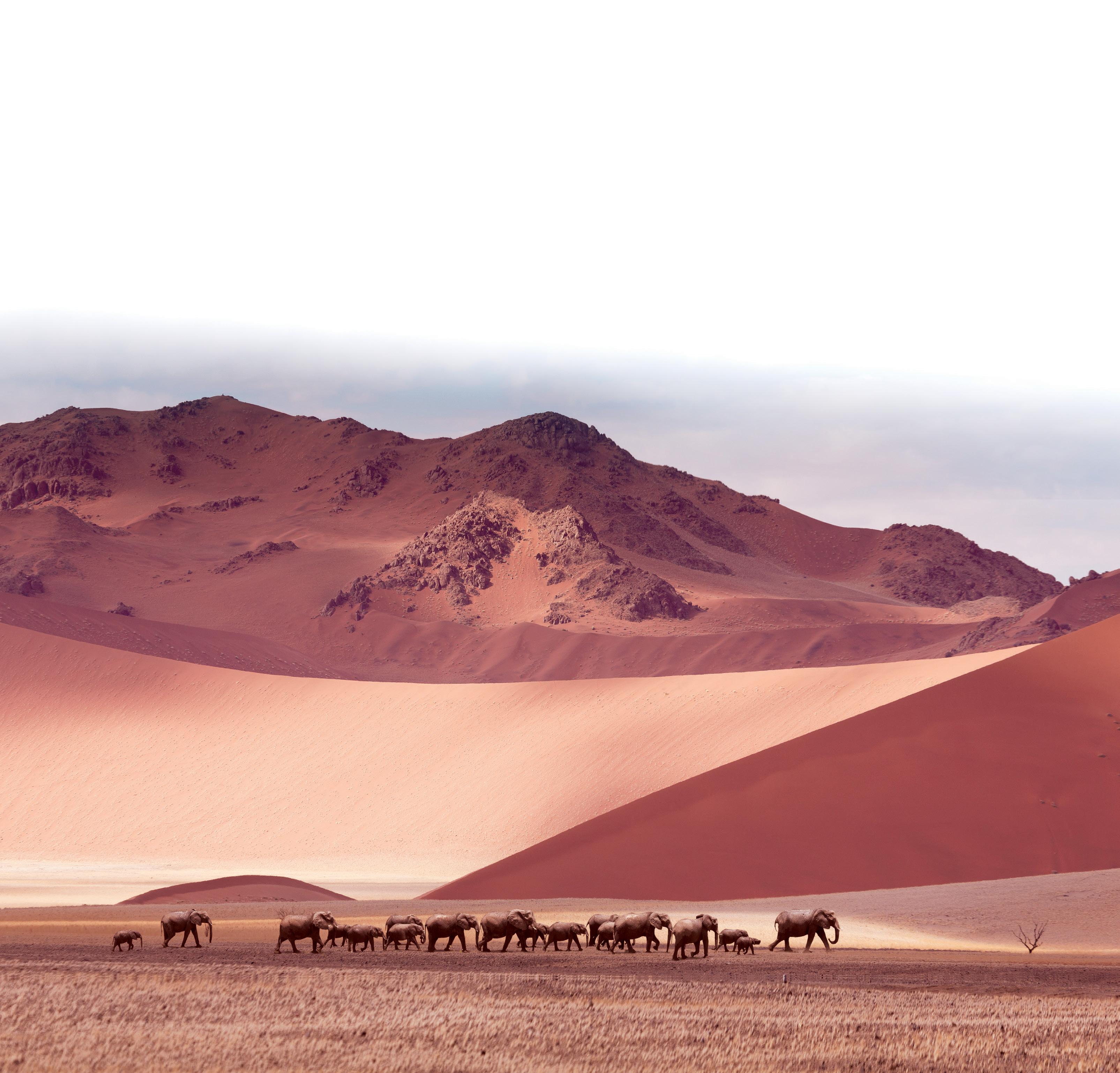
Our round-up of Namibian books and movies we love and why the world should love them too.

Séraphin, a young man forced to flee Rwanda during the Civil War, navigates the complexities of identity and belonging while grappling with the challenges of family life in Windhoek, Namibia. As he prepares to embark on a new chapter in Cape Town, South Africa, Séraphin encounters loyal friends, adventurous experiences and the pursuit of a prestigious law degree. Ngamije’s narrative skilfully explores themes of migration, friendship and self-discovery, offering readers a compelling glimpse into Séraphin’s journey of resilience and growth amidst adversity.

In Oshiwambo the elephant is likened to the most challenging situation that people can face. Growing up in a traditional household in northern Namibia, attending a Catholic school and later joining the liberation movement, Amulungu shares her candid reflections on survival, longing for home, and the challenges of adapting to unfamiliar environments. She recounts her cultural shocks and discoveries during her time in exile with honesty, emotion and humour, offering readers a close portrayal of life, friendships and community across various locations.

Nine-year-old Baxu navigates life in poverty with her brother Khata and her grandmother in a Damaraland village in Namibia. Their peaceful existence is disrupted when strange men arrive, leading to changes in the village and within Baxu’s own household. As she uncovers her brother’s involvement in poaching to improve their family situation, Baxu is faced with a difficult choice: should she remain silent, or heed the wisdom of the rhinos, the giants of the savannah, with whom she communicates in her dreams? The short film explores themes of family, sacrifice and the struggle to preserve tradition in the face of adversity.

Owen-Smith dedicated his life to wildlife conservation in Namibia’s remote northwestern region, which he calls his “Arid Eden”. Despite challenges like poaching and official indifference, he championed the harmonious coexistence of indigenous communities and wildlife, showcasing it as a model for conservation. After years of pioneering work and expulsion from the Kaokoveld in 1970, Owen-Smith returned in 1978 to embark on a 27-year journey to revive the region’s wildlife population. An Arid Eden is a personal account of Owen-Smith’s challenges and triumphs as one of Namibia’s foremost conservation heroes.

Free, independent and produced in Windhoek, Doek! is a vital platform for diverse voices in Namibia and beyond. Launched in 2019 and published biannually, this Pan-African online literary magazine offers a space for short fiction, nonfiction, poetry and visual art, fostering a rich literary culture. By featuring works from local and international contributors, Doek! bridges global audiences and storytellers, contributing to a more inclusive literary landscape. In 2020, Doek! was selected as Brittle Paper’s Literary Platform of the Year.

Set in Namibia’s struggle for independence, the film follows Sylvia, a black domestic worker, and Anne-Marie, her racist employer. Amidst societal prejudices, Sylvia finds solace in a forbidden romance with Anne-Marie’s brother Pieter, a white police officer. Through powerful storytelling, the movie illuminates the complexities of love and resilience amidst systemic injustice. Recognised at film festivals across Africa, The White Line offers a poignant portrayal of post-colonial race relations and societal norms.


Namibia may consider reviewing its currency peg to the South African Rand if its economy booms due to oil and gas discoveries and development of the country’s green hydrogen sector, according to central bank Governor Johannes !Gawaxab.
!Gawaxab made the remarks following the monetary policy announcement taken to maintain the repo rate at 7.75%.
The prospect that Namibia’s economic structure could change may give renewed discussions about de-pegging from the Rand, !Gawaxab said.
“When you look at what is happening with the economic structure of the country that is changing, what if Namibia becomes a serious oil exporter? What if green hydrogen takes off and we become a large player in that space? We need to think about how we prepare ourselves as a nation in terms of the choice of our exchange regime, but at this stage, the benefits far outweigh the costs,” !Gawaxab said.
De-pegging from the Rand at the moment would lead to a lot of volatility and hurt Namibia, he said.
“Currently, we have got a lot of volatility, the exercises and simulations we have done, we are better off currently. We are better off in the [Common Monetary Area] arrangement,” !Gawaxab said.
At independence in 1990, Namibia opted to remain in the Common Monetary Area (CMA), leaving monetary and exchange rate policies to South Africa. Meanwhile, the Monetary Policy Committee (MPC) of the central bank, in its decision to keep the repo rate unchanged at 7.75%, said the decision was guided by disinflation domestically and globally.
“The MPC noted the continued disinflation both globally and domestically. With real interest rates remaining positive, and slow credit growth, amid a fair level of international reserves,
the MPC decided to maintain the repo rate at its current level. The policy stance will continue to safeguard the one-to-one link between the Namibia Dollar and the South African Rand and support domestic economic activity,” !Gawaxab said of the decision to maintain the repo rate at 7.75%.

Bolt has launched a pilot ride-hailing service in Namibia and plans to onboard 200 drivers while offering zero commissions for the next six months.
Bolt is a free mobile application that connects drivers and customers and allows customers to conveniently request a driver to pick them up wherever they are and take them where they want to go in a quick, reliable, and affordable way, while drivers registered to the platform can earn money by accepting hire services through the application.
Bolt says its foray into Namibia underscores its commitment to revolutionizing mobility in the region.
“By offering ride-hailing services tailoredto both individual and corporate needs, Bolt aims to provide Namibians with convenient, reliable, and affordable transportation options.”
Laurent Koerge, Head of Expansion at Bolt, said, “Our mission extends beyond merely boosting driver revenues; we aim to ignite demand through competitive pricing. By keeping our commissions substantially lower than our counterparts, we ensure drivers earn more while presenting customers with appealing service fees. Our unwavering dedication to profitability and fairness underscores our belief that happy drivers are the cornerstone of happy customers.”
The move is expected to bring competition to the local market currently serviced by LEFA, InDriver, Dial a Cab, City Cab, and Yango.
Bolt has over 150 million customers in over 45 countries and over 500 cities across Europe and Africa.

The Namibia Power Corporation (NamPower) says it will be spending about N$19.8 billion on electricity generation and transmission expansion in the next five years.
The national power utility Managing Director, Simson Haulofu, said N$9.9 billion will be used on generation projects, N$6.5 billion on transmission lines, while other capital projects will account for N$3.3 billion.
“NamPower is in a sound financial position and boasts a cash reserve of N$10.3 billion, plus an additional N$5 billion debt under consideration by KfW, AfD and World Bank. Thus, our worry is on the funding gap of around N$3.5 billion, which we shall approach new investors,” he said.
“We also received a grant of N$755 million. So this compounds the total funds needed to be spent on these projects from 2024-2029. And this is possible because of our profitability and strong balance sheet,” he said in Cape Town, South Africa where he attended the Mining Indaba.
On generation, Haulofu said NamPower is undertaking a combined 318MW projects in the short term. In the medium term (2-5 years) 455MW projects are lined up.
These are 40MW biomass to be undertaken in quarter 1 of 2027, a 45MW (two hour) BESS will also be commissioned during that period.
Whereas in the fourth quarter, a 100MW BESS, 120MW solar PV (phase I) and 150MW Solar PV phase II will also be initiated. “As a long term beyond five years, we further plan to construct a 100MW BESS, 250MW liquefied natural gas or green hydrogen through Independent Power Producer, 300MW mega wind, as well as 430MW Baynes Hydro Power Plant. These projects will produce a combined 1,080MW. Hence our aim is to become 80% self-sufficient by 2028 and also reach 70% renewable energy by 2030, thus solidifying our security of supply,” he said.
“We also do not just generate without evacuation, thus under the Transmission front. So far, we have completed 400kv Kunene-Omatando as well as 400kv Auas-Gerus. We have ongoing projects of a 400kv Obib-Oranjemund interconnector with South Africa, as well as the 400kv Auas-Kokerboom.”
Other transmission projects lined up are 400kv KuneneCahama interconnector to Angola, 400kv OmatandoOtjikoto, 400kv Namib-Obib, 220kv Otjikoto-Masivi, 400kv Kunene Bynes, including the 330kv Zambezi-Sesheke interconnector to Zambia.
“We are making good progress towards implementing these projects, hopefully, if all goes as planned. In addition, we are negotiating with Angola including South Africa as we work on interconnectors to open up our transmissions into the regional pool,” he said.
“Therefore, NamPower will continue to engage and embrace the changing energy environment. We know many things are happening in the energy environment, especially the new technologies and renewable energy to be specific, be it wind or solar, which we are fortunate to have in abundance. That is why we should ensure that we are well on track and provide such services, while also looking at making a footprint in the region. We need to leverage from this endowment."
“We know that some things are not really cheap, as they seem to be, hence we need support. We also know the positions of mining houses. They have got also their target on renewable energies, especially on the carbon emissions, hence our mission is to meet their demand and be able to supply at any given time,” Haulofu added.


We are building a telescope in Namibia to get better images of black holes. But it’s much more than just bricks and mirrors and high-speed data wires. The Africa Millimetre Telescope (AMT) is being built for the Namibians and with the Namibians. But we – scientists from the University of Namibia (UNAM) and the Radboud University in The Netherlands – don’t just build and leave. The whole idea is to create a long-term awareness and interest of what’s going on in that amazing, clear night sky above Namibia. To this end, one of our key activities is the mobile planetarium – a blow-up mobile universe creating a social impact in even the most remote areas of Namibia. The AMT project continues to draw more and more attention and recently the AMT mobile planetarium team won the prestigious Annie Maunder Medal, a prize awarded by the Royal Astronomical Society for outstanding education and outreach efforts.
Our mobile planetarium project travels around the country to help educate children and communities and show the wonders of our universe to a very diverse audience. Our team is led by Zandré Duyvenhage from Windhoek, who knows exactly why our social impact project has won this international award: “One thing that travels faster than light is passion. The team’s passion for the universe is what people notice and what has drawn international attention. We are making science accessible to the people in an exciting manner by sharing knowledge about the wonders of creation with those who don’t necessarily have access to it. The big ‘why’ of being awarded with this medal is the passion and the heart of the team sharing their passion with others.”
Right now, the team consists of 18 students from UNAM who give their all to spread the knowledge and share their passion for science with as many children and adults as possible. They study physics and/or astronomy and are able to teach and inspire the next generation. During their weekends and free time, they hop into cars and planes (thanks to FlyNamibia) to travel to the most remote corners of the country. Even when it is not easy (read: really hard) to pay for their education and they have side jobs to keep themselves at university, they do find the time, motivation
and energy to show up and tell others about the stars, the planets, the Milky Way and beyond. On busy days, they give shows inside the dome hour after hour, sometimes with cooked brains due to all the questions from the kids and the heat that builds up inside as the unforgiving Namibian sun burns outside. But they present each show as if it were the first time they saw the universe themselves.
Our ‘man in Namibia’ Zandre (30) is a husband, father and a Our “man in Namibia”, Zandré (30) is a husband, father and member of a local church. “As a representative for the AMT project, I support the efforts to make sure that the telescope is coming to Namibia and that it will be constructed at the right place and at the right time. My other task is to establish a base for the AMT and bring it to life in a sustainable manner. I coordinate the team and the planetarium’s daily activities so that as many Namibians as possible can experience the wonders of the universe, and I work with local stakeholders who support the project.” He studied Law in Potchefstroom (South Africa) and worked at a law firm in Windhoek when his attention was drawn to a lecture on the AMT back in 2019. “I had a general interest in space, but I never thought of working in the space business. I just never dreamt it would be possible for me. And suddenly I found myself right in the middle of it. Wow!”
A lecture on the AMT project lit a fire within his soul. He

walked up to the director of the project, Dr Marc Klein Wolt, and told him he wanted to be a part of the project. In 2022, a dream beyond belief came true as Zandré joined the team. Since then, he has learned a tremendous amount about astronomy by acting like a sponge (in his words: “I feel like Einstein’s driver!”), reading books, watching videos and asking questions. “And the more I learn, the more it enthuses me,” he adds. When teaching kids at school, he always starts by telling them how they would like to improve the image of the black hole, “because right now it looks like a fuzzy orange donut.” Imagining that the telescope in Namibia could help improve that image makes it more relatable for them.
Zandré also tells them about Dr Japie van Zyl, the Namibian electrical engineer who was responsible for many of the Mars landings while at NASA. “Everyone knows Elon Musk, but he hasn’t landed anything on Mars yet – a Namibian has. I’ve heard that the thing that got Van Zyl to study electronic engineering and work at NASA was looking up at the Namibian night sky as a kid. That makes us want to catch the right kids at the right time, no matter how remote they live. We don’t even want these children to become astronomers. We want them to be curious, to ask questions, wanting to know more and eventually become good problem solvers. We’ve had over 12,000 people visiting the planetarium in 18 months, so statistically it’s very possible we have inspired at least someone, right?”


The Africa Millimetre Telescope (AMT) is a project run by the Radboud University (The Netherlands) and the University of Namibia (UNAM) with the aim of building a 15-metre-large radio telescope on or near Gamsberg Mountain. This telescope will be unique in its kind, as it is set to be the first completely newly built facility to be part of the Event Horizon Telescope (EHT) – the project that realised the historical first image of a black hole – and it will be the only telescope of its kind in the whole of Africa. An integral part of the AMT project is a social programme which includes a mobile planetarium – an inflatable dome that can host up to 30 kids at a time and in which shows about the wonders of the universe are displayed in an interactive way. FlyNamibia, together with Nedbank, Gondwana, Lithon Foundation, Minds in Action, Ineos Grenadiers, the Namibia Scientific Society, GREE, Perfect Glass, and Eduvision are proud sponsors of the AMT mobile planetarium.
It all started when Dr Marc Klein Wolt, director of the project, wanted to make a difference. During a brainstorming session with the honorary consul of Namibia in The Netherlands, Cornélie van Waegeningh, the idea of travelling with a mobile planetarium came up. He says, “The telescope is for this country and we want to do it together with the Namibians. We want to inspire the next generation and play a role in educating children and communities. Thanks to our highly qualified, hard-working and motivated team we can make this wish come true.”
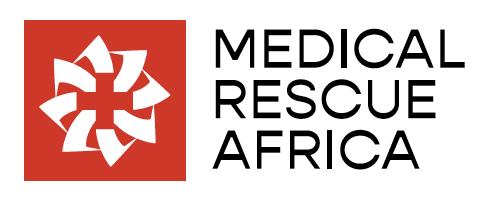

Medical Rescue Africa (MRA) is Namibia’s leading fixed wing Aeromedical Evacuation company specialising in the evacuation of critically ill and injured patients across Africa, 24 hours a day, 7 days a week.
MRA, through Westair Aviation, has a dedicated fleet of Air Ambulance aircraft on standby which have the ability to land on unimproved airstrips as well as to operate at night and in bad weather conditions. Air crews undergo regular refresher training, and all operations comply with the highest safety and quality standards.
MRA has its own 24-hour Call Centre with trained and dedicated operators utilising state of the art equipment and aviation information technology. The Call Centre liaises with local and international Medical Aid, insurance and medical assistance companies to help facilitate and coordinate medical evacuations, and medical repatriation services.
To ensure the best possible pre-hospital treatment to patients, MRA offers a 24-hour Road Ambulance at Eros Airport for transporting patients from the Airport to the treating Hospital. The MRA Ambulance is equipped to an ICU patient care level. MRA has a standard service-level agreement with all accredited ALS Ambulance Services across Namibia for effective Road Ambulance evacuation services should the requirement be to not activate the fixed wing Air Ambulance.
MRA is led by a management team with extensive experience in medical response, evacuation and support operations.
Tel: 912 within Namibia or +264 83 339 0033 Internationally | Mail: mra@westair.com.na Web: www.medicalrescueafrica.com


Namibia’s economic narrative is significantly shaped by its mining and energy sectors – industries that not only contribute substantially to the nation’s GDP but also embody the spirit of innovation and resilience. As we explore these sectors, we uncover a story of robust growth, pioneering discoveries and a steadfast commitment to sustainable development that positions Namibia as a leader in both the African continent and the global arena.
The mining sector, a cornerstone of the Namibian economy, has seen remarkable growth, particularly in diamond production. This boom is attributed to the operational success of the MV Benguela Gem mining vessel and increased efficiency in land-based operations. Such advancements underscore Namibia’s position as a global leader in diamond mining, with Debmarine Namibia’s production soaring by 52% in 2022. This sector’s continuing anticipated growth reflects the ongoing momentum and the country’s adeptness in leveraging its natural resources.
Despite facing challenges such as interruptions in the desalinated water supply, the uranium sector is on a path to recovery with a projected growth of 4.5% in 2023. The anticipated restart of Paladin Energy’s Langer Heinrich mine signifies a rejuvenation of uranium mining in Namibia, fueled by rising uranium prices and a renewed interest in nuclear energy globally.
The exploration for lithium and other rare earth minerals is set to transform Namibia’s mining landscape further. With the global demand for lithium-ion batteries on the rise, Namibia is poised to become a key player in supplying critical materials for the green energy transition. The initiation of lithium concentrate production at Andrada Mining’s NaiNais mine and new discoveries by Osino Resources highlight Namibia’s potential to contribute significantly to the global supply chain of these essential minerals.
Namibia’s ascent in the Fraser Institute’s Investment Attractiveness Index is a testament to its improving regulatory environment and potential mineral wealth. This enhanced ranking not only attracts international investment but also reinforces the country’s commitment to fostering a competitive and sustainable mining sector.
Transitioning to energy, Namibia is making significant strides in reducing its reliance on imported electricity through the development of renewable energy sources. With independent power producers contributing 9% of the total electricity output and the inauguration of the Omburu solar plant, Namibia is laying the groundwork for a sustainable and self-sufficient energy future. The exploration of green hydrogen, marked by the signing of the Feasibility and Implementation Agreement with Hyphen Hydrogen Energy, positions Namibia at the forefront of the global green energy transition, promising economic diversification and environmental sustainability.
The exploration for offshore oil in the Orange Basin by TotalEnergies and Shell further diversifies Namibia’s energy portfolio. The potential discovery of approximately 6.5 billion barrels of oil could significantly enhance the country’s revenue from royalties and taxes, although the production timeline remains cautious.
Namibia’s mining and energy sectors are emblematic of a nation that is not only richly endowed with natural resources but also committed to harnessing these assets responsibly and innovatively. Through strategic investments, environmental stewardship and a focus on sustainable development, Namibia is carving a niche for itself as a model of economic resilience and environmental sustainability on the African continent and beyond. As these sectors continue to evolve, they promise to fuel Namibia’s economic growth, create employment opportunities and contribute to the global shift towards cleaner energy sources, solidifying the country’s role as a pivotal player in the global economic and environmental landscape.


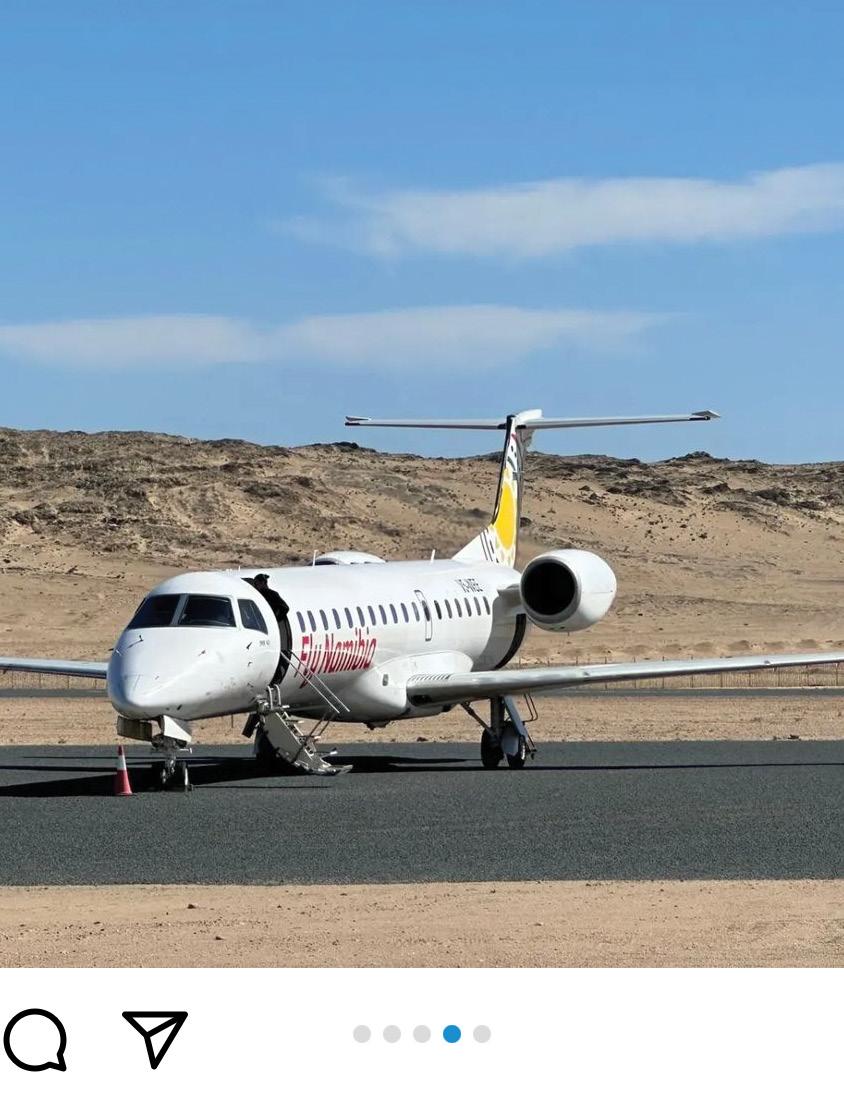
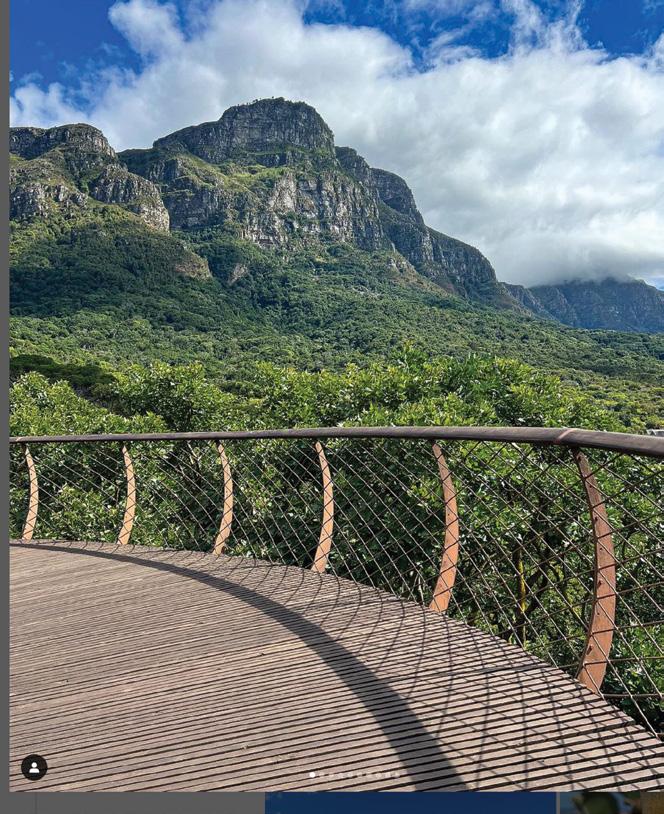


We love seeing your journeys with FlyNamibia on Instagram. Keep Tagging!
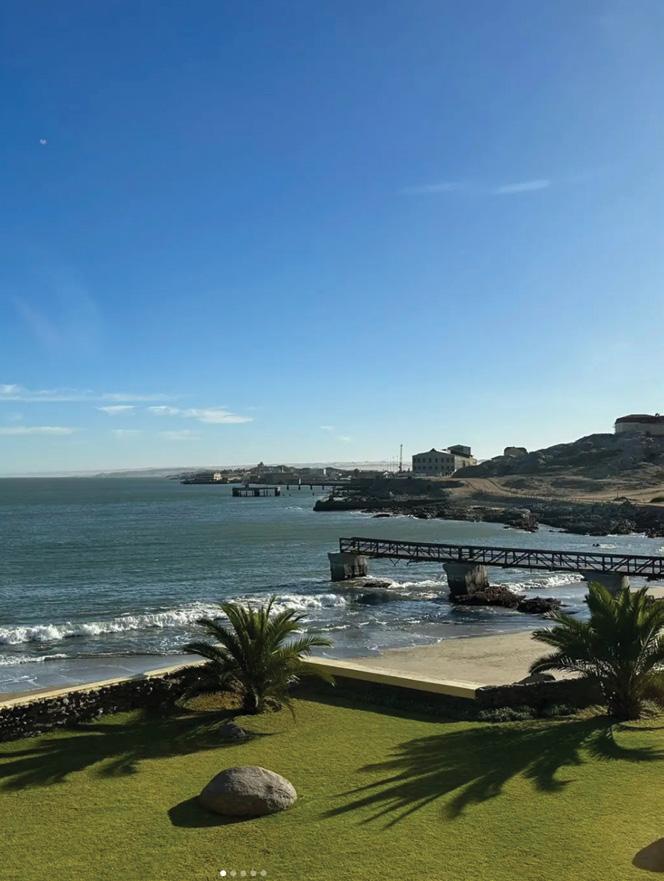

We asked the FlyNamibia fam where to find the very best Kapana in the country, and there is a clear winner:




In the heart of Southern Africa, Namibia stands as a testament to the power of a free and diverse media landscape. Despite its modest population, this nation has cultivated a media environment that is not only varied but thrives in freedom, setting a benchmark for countries around the world. Namibia’s freedom of media, enshrined in its constitution, was once again internationally recognised, with the country reclaiming its top spot for press freedom in Africa in the 2023 World Press Freedom Index, outperforming giants like South Africa and Seychelles. Ranked 22nd globally, Namibia surpassed many developed nations, including the United Kingdom, France and the United States, in ensuring a free press – a cornerstone of democracy.
Namibia’s media spectrum is as diverse as its landscapes, with the annual MediaMetrics survey revealing a strong preference for traditional media. Radio remains the most beloved medium, with over a million listeners tuning into a mix of public, commercial and community stations. Television follows closely, with social media and the internet not far behind, reflecting a society that values both tradition and modernity in its media consumption.
The state-owned Namibian Broadcasting Corporation (NBC) leads in broadcasting, offering a wide range of content across its radio and television platforms. Yet, the vibrancy of
Namibia’s media is further enriched by over 30 commercial and community radio stations and several private television broadcasters. This diversity ensures that every Namibian voice can find a channel or a station that resonates with their unique perspective.
Meanwhile, the print media, despite facing economic pressures, continues to demonstrate resilience and adaptability, with newspapers expanding their digital presence to stay connected with their readership.
Namibia’s commitment to media freedom is further underscored by the introduction of the Access to Information Act, a significant step forward in promoting transparency and accountability. Although awaiting full implementation, this legislation marks a milestone in Namibia’s journey towards ensuring the right to information for all its citizens.
Namibia’s media landscape is a reflection of its society –dynamic, diverse and forward-looking. It serves not only as a platform for free expression but as a critical tool for democracy, enabling informed citizenship and facilitating public discourse. As Namibia continues to lead the way for press freedom in Africa, it stands as a beacon of hope and a model for others to follow. In celebrating Namibia’s media successes, we celebrate the spirit of freedom, diversity and resilience that defines this remarkable nation.





Imagine a movement that not only uplifts the local economy but also instils a sense of national pride and unity. That is exactly what Team Namibia has been doing since its inception in 2003. By rallying Namibians to support homegrown products and services, this nonprofit association has become a cornerstone of the country’s economic and social fabric.
At the core of Team Namibia’s mission is a simple yet profound idea: by choosing local, Namibians can drive their country towards sustainable economic growth. This vision is embodied in the UUKUMWE principle, emphasising unity and collaboration for the greater good. It is not just about economic benefits; it is about building a stronger, more resilient Namibia.
Team Namibia is not just about encouraging locals to buy Namibian; it is also about ensuring that the products and services offered meet the highest standards of quality and safety. Members of Team Namibia must demonstrate compliance with stringent criteria, offering consumers not just local options, but the best Namibia has to offer.
One of the most significant impacts of supporting local is the multiplier effect on the economy. Local businesses reinvest a considerable portion of their earnings back into the community, spurring job creation and fostering economic development. Moreover, this support stimulates entrepreneurship, identifying market gaps ripe for innovation and offering consumers diverse, competitively priced products.
Team Namibia’s efforts go beyond economic metrics – they
are about crafting a national identity that Namibians can take pride in. The Team Namibia logo serves as a badge of honour for products and services, symbolising quality and authenticity to both locals and tourists. This identity is crucial for attracting foreign investment and tourism, further bolstering the economy.
The initiative’s success is underscored by its diverse membership, spanning various sectors from retail giants like Shoprite & Checkers and Pick n Pay to specialised service providers like the Hospitality Association of Namibia and the Namibia Tourism Board. Each member plays a pivotal role in driving Team Namibia’s mission forward, contributing to a vibrant, sustainable marketplace.
As Team Namibia continues to grow, its vision for a selfsufficient, economically robust Namibia becomes ever more attainable. It stands as a beacon of what can be achieved when a nation comes together to support its own. In the face of global challenges, Team Namibia’s model of local empowerment and unity offers a blueprint for other nations striving for economic independence and sustainability.
In essence, Team Namibia is more than an initiative – it is a movement towards a brighter, more prosperous future. By choosing to support local, Namibians are not just making a purchase; they are making a statement about the kind of future they want to build for their country.




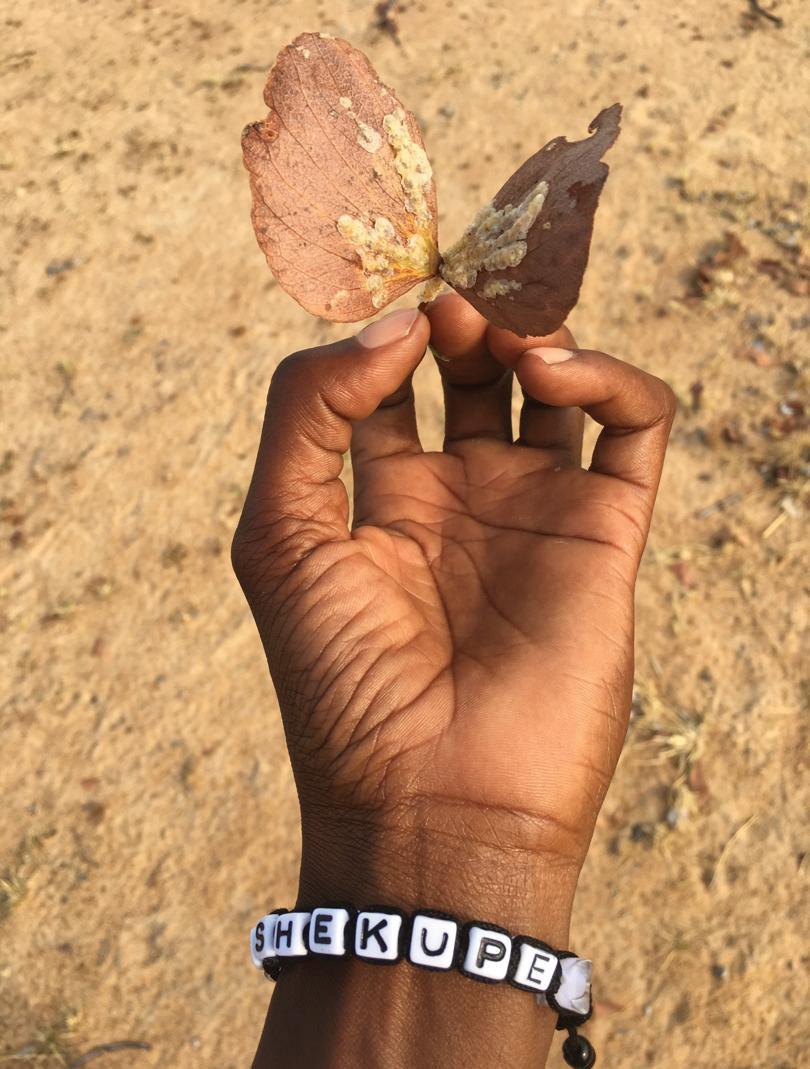

Scientific name: Colophospermum mopane
Common name: Mopane
The first corridors through which I walked were built with wood, not with bricks but with thick and long, peeled logs. The wood of the mopane tree was the perfect homestead construction material at that time, and it still is. Stands of this tree species have decreased due to land clearing for crop fields and developmental activities. The majority of modern communities have resorted to other types of building materials.
Mopane trees can be seen in most of north-central Namibia, but especially in the Omusati Region. In fact, omusati refers to the mopane tree in the Oshiwambo language.There is a longer version of where the name originates from. Literally, omusa ati means what the dead one said. Legend has it that this particular tree was to be given a name at a special event. But on the morning of that day the tribal chief passed on.
Mopane varies in size, depending on the soil. It can be a shrub with thin stems or a tall tree with hard wood. The distinctive large and medium-sized leaves are bifoliate and the pods are kidney-shaped. Leaves and pods are green when moist and turn brown when they dry. Crushed leaves and the pods have a turpentine smell. The flat seeds inside the pods contain resin which is suitable as an essential oil in skincare products. The leaves are browsed by livestock and some wildlife. Regeneration of mopane tree stands is
an effortless natural process: pods that have fallen to the ground germinate after sufficient rainfall.
Mopane wood is well suited as firewood. We usually deposit the ash in the crop fields. It is said to be high in calcium and therefore a great fertilizer, but I noticed how it actually improves soil texture. The wood is also used to make pestles, or pounding sticks, and what we call oshini, the bowl in which grains such as mahangu and sorghum are pounded. I honestly never liked having to wake up at 4:00 am with my cousins and aunties to pound, but the choice was between a decent beating from grandma or pounding anyway.
Mopane wood is most commonly used for the construction of homesteads and for fencing crop fields. The bast fibre of the branches is used to tie wood horizontally to mopane poles in the ground. It is also used to tie branches when weaving barns for mahangu storage or to tie wood collected from the open communal areas. Mopane wood is durable. It takes time before it deteriorates under environmental conditions.
Interestingly, not only does the mopane tree host the mopane worm – a highly nutritious caterpillar – but also an insect that produces an edible sugary liquid. When the liquid dries on the leaves it forms small whitish flakes, locally known as uutushi. The flakes are really sweet and people with a mind for business are harvesting them beyond household consumption to sell them at open markets. Agnes
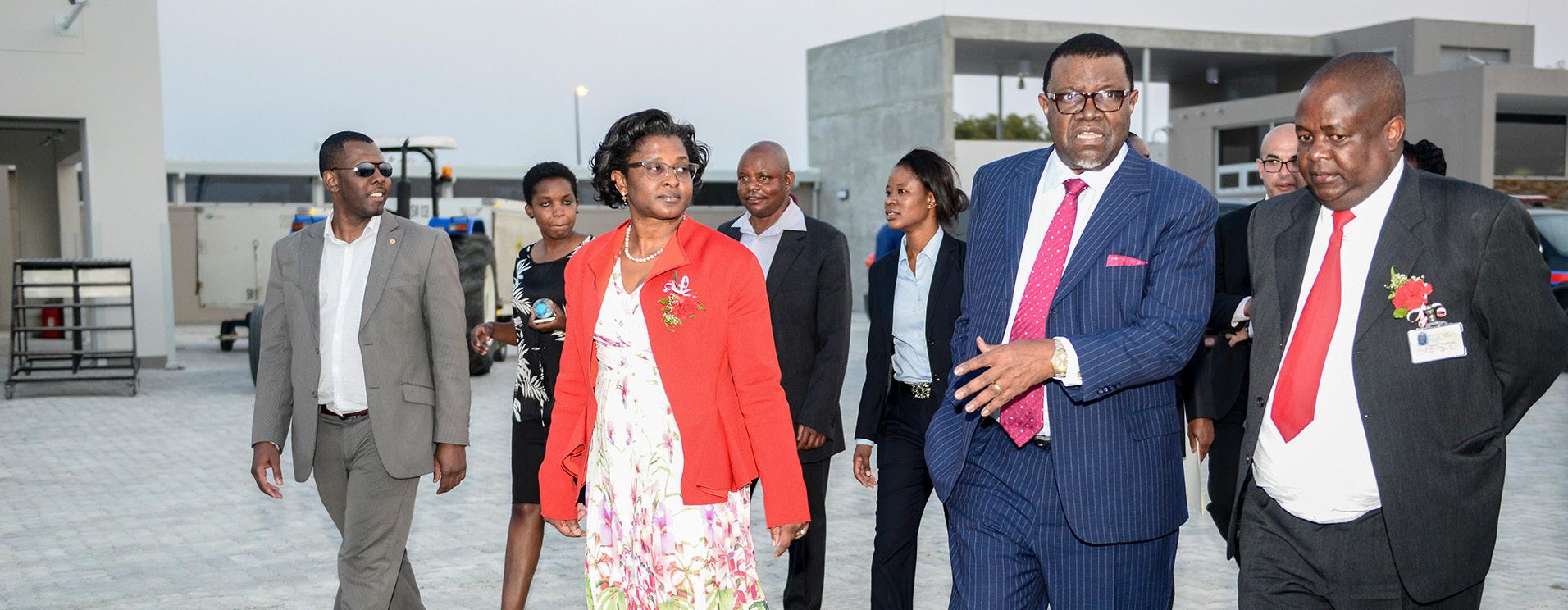

During his tenure as President, Dr Geingob’s wisdom and decisive leadership culminated in the inauguration of modern terminal buildings at the Andimba Toivo Ya Toivo Airport at Ondangwa and the Walvis Bay International Airport. A brand-new fire station at Eros airport as well as the revamp and extension of the Hosea Kutako International Airport’s terminal building to decongest Namibia’s main gateway, are some of the highlights.
We mourn Dr. Geingob’s passing but will continue to honor his legacy by ensuring that institutions, systems, and processes are strengthened to stand the test of times as we commit to serving our Nation with excellence and dedication.

Human Resources is a field where your life becomes dedicated to helping others reach their potential and moving organisations into new eras. Sabrina Jacobs is a young Namibian who is moving mountains for others. She is determined to capacitate people so they can grow and contribute to the company’s goals.
As a child she stayed in various places but always felt connected to family. Born in Windhoek, she spent the first five or so years of her life with her granny and aunt in Cape Town. She then returned to her family home in Khomasdal, a suburb of Windhoek, where she grew up with her two younger siblings. The family moved to the Hochlandpark part of town when Sabrina was about to start high school at DHPS (a German private school).
Leaving her family to go and study was a shock to her system. Sabrina found herself at Nelson Mandela Metropolitan University (NMMU) in South Africa, home sick and not sure which courses to choose. Her passion for helping people had been stoked in her youth by attending church and being exposed to the generosity and love of others there. She was convinced that she wanted to study psychology, but seven years seemed like a very long time to be a student.
Manager’s Development Programme at the University of Stellenbosch Business School.
As a human capital and organisational development specialist, Sabrina has spent several years honing her skills in the oil and gas, retail and wholesale and hospitality industries. Currently she is employed as General Manager: Human Resources at Cymot (Pty) Ltd. Her motivation and drive, however, comes from more than just her day job.

NMMU offered Industrial Psychology as part of a BA in Human Resources, and with that the path of Sabrina’s career presented itself. Her father encouraged her to overcome the struggle of being away from home and get her qualifications, and she went on to get her BA Honours in Labour Relations and HR. She also completed the Senior
Proudly Sponsored by
Sabrina grew up playing music in church. She played the recorder and went on to learn the clarinet. Teaching young kids music gives her joy and fulfillment. She teaches them to play the recorder and still plays her clarinet as often as she can. She chooses gratefulness and is motivated to make a difference in someone’s life everyday. “That’s why I went into HR”, she told Mooks of 99FM, “to help others.”
Her advice for living life at its best is simple: never stop learning. She quotes the famous Zig Ziglar saying: “If you are not willing to learn, no-one can help you. If you are determined to learn, noone can stop you.”
Sabrina is learning, growing, developing and reaching impressive heights, and she brings an entire organisation on the journey with her.


When was the last time you played? Maybe you counted the number of clouds in the sky on your way to work or made up a story for your child at bedtime. Play has been a part of all our daily lives since the moment we were born.

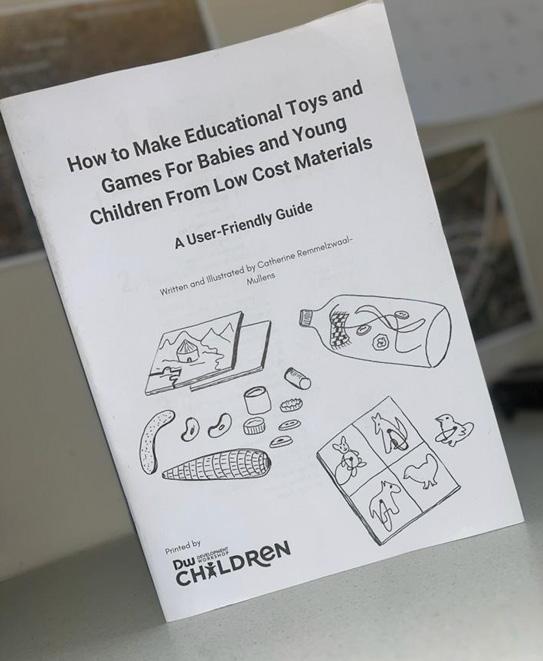


Play is broadly defined as the act of engaging in an activity for enjoyment or recreation. Simply put, any activity without a specific purpose, other than bringing you joy, is play! While regarded widely as recreation, play has profound and lasting effects on brain development –particularly in children.
Early childhood development (ECD) refers to the holistic physical, emotional and mental development of a child during the first few years of life. During the period between the ages of 0 and 6 years, a child’s brain forms over 1 million new neural connections every second.
The brain undergoes massive growth during this time, which means children are able to rapidly learn new information and skills. This is where play comes in – it allows children to interact with different people, concepts and things which lead to them developing new abilities based on these interactions. By regularly engaging in play by themselves and with others, children learn how to collaborate with peers, engage their sense of imagination and creativity, and gain a heightened sense of independence – all of which are essential to their development into strong, healthy and well-rounded adolescents and adults.
It is also believed that children develop specific skills depending on the type of play they are engaging in. For example, unstructured free play, such as when children act out stories or play make-believe, helps children to practise new social skills and to think on their feet. Playing with older, more skilled children helps younger children learn to copy positive behaviours modelled by older peers, while older children assume a leadership role which teaches discipline and responsibility. Team games or activities encourage children to work together, which may lead to them developing higher levels of social awareness and empathy for others.
Notably, children who enjoy playing outdoors and participating in aerobic exercise tend to experience more positive moods and display better levels of concentration at school. Does your child enjoy playing make-believe or copying how older adults perform in the kitchen or an office? If yes, they will likely have higher rates of self-regulation, better language skills and a larger capacity for creativity than children who don’t.
Play is an incredibly important aspect of every child’s life and the right of all children to enjoy, no matter the resources that are available to them. Liezl Möller, a training partner of Development Workshop Namibia (DWN) and founder of Busy Brains, an ECD centre in Windhoek, explains the innovative way their centre repurposed donated household items to encourage children to engage in practical life play: “When children play in a mud kitchen, they are using a variety of senses and skills. They experience dry and wet, warm and cold, crunchy and smooth. That’s why we leave them to add water, leaves, rocks, flowers or whatever they find outside.”
Möller adds, “When they make use of old kitchen tools instead of toys, they further their sensory experience by feeling the difference in weight of heavy pots and pans, their hand grip develops, and they use the correct vocabulary for real-life items. Besides all the sensory, physical and language development at work here, they learn to share, wait, discuss ideas and experiment in a carefree environment.”
It is also important to remember that toys do not have to be expensive or store-bought. At a recent children’s reading event hosted by DWN in Gobabis, a town in eastern Namibia, parents were taught how to make toys using very few household items. When asked if he would continue to make and use the homemade toys with his children, Kufina S. Pontianus, a father who attended the event with his family, had nothing but positive feedback. Pontianus explained, “You can understand and learn more about them [children] through the toys. I’ll always use the toys; there’s no other way to communicate with the kids.”
Though it is an indisputable fact that play is essential to the development of a healthy child, most Namibian children unfortunately do not benefit from the same quality of early childhood development experiences and opportunities to play as those children at Busy Brains. As of 2015, 26% of Namibians were living in multidimensional poverty, or experienced some measure of depravity – be it financial, educational, medical or nutritional. These Namibians often take on multiple jobs and lack the financial capacity, time or knowledge to support their children in playing every day or to send them to high-quality ECD centres (kindergartens). This phenomenon is reflected in a 2015 statistic that revealed 70% of children aged between 3 and 5 years were not regularly attending an early-learning programme. There is also still a belief that childhood education needs to be treated as formal education, and too often playfulness is not incorporated into or emphasised in lesson plans for the early years. The limited and rigid methods in which certain lessons are taught hinders brain development and skill attainment due to children not being able to utilise different techniques to process and make connections between concepts and information.
Because of these challenges it is crucial that, as the most influential role models in a child’s life, parents, caretakers and educarers do their best to support the child to play as much as possible. DWN currently provides technical ECD assistance to over 300 centres across 12 towns nationwide. DWN is committed to advocate for equal educational opportunities for all children and has been working directly with educarers, parents and caretakers through regular training and workshops wherein attendees engage in interactive activities and receive informational resources and materials that help them support their children with playful teaching and parenting practices.
Play is a fundamental component of a child’s holistic development. Through play, children acquire skills that enable them to grow into healthy, fulfilled and productive members of society. It is the right of every child in Namibia – and around the world – to play, and it is the responsibility of every adult in their life to ensure children experience the transformative power of play. Whether it is singing a song with them on their way to school, telling them a story before bedtime, or making homemade toys together, play with your child and encourage them to play every day. And remember, the power of play has no age limit!
Hailey Hansen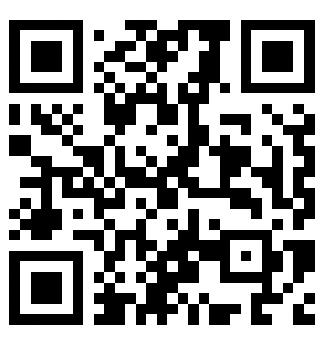
For more information into the work carried out Development Workshop Namibia, scan the code to explore our website.
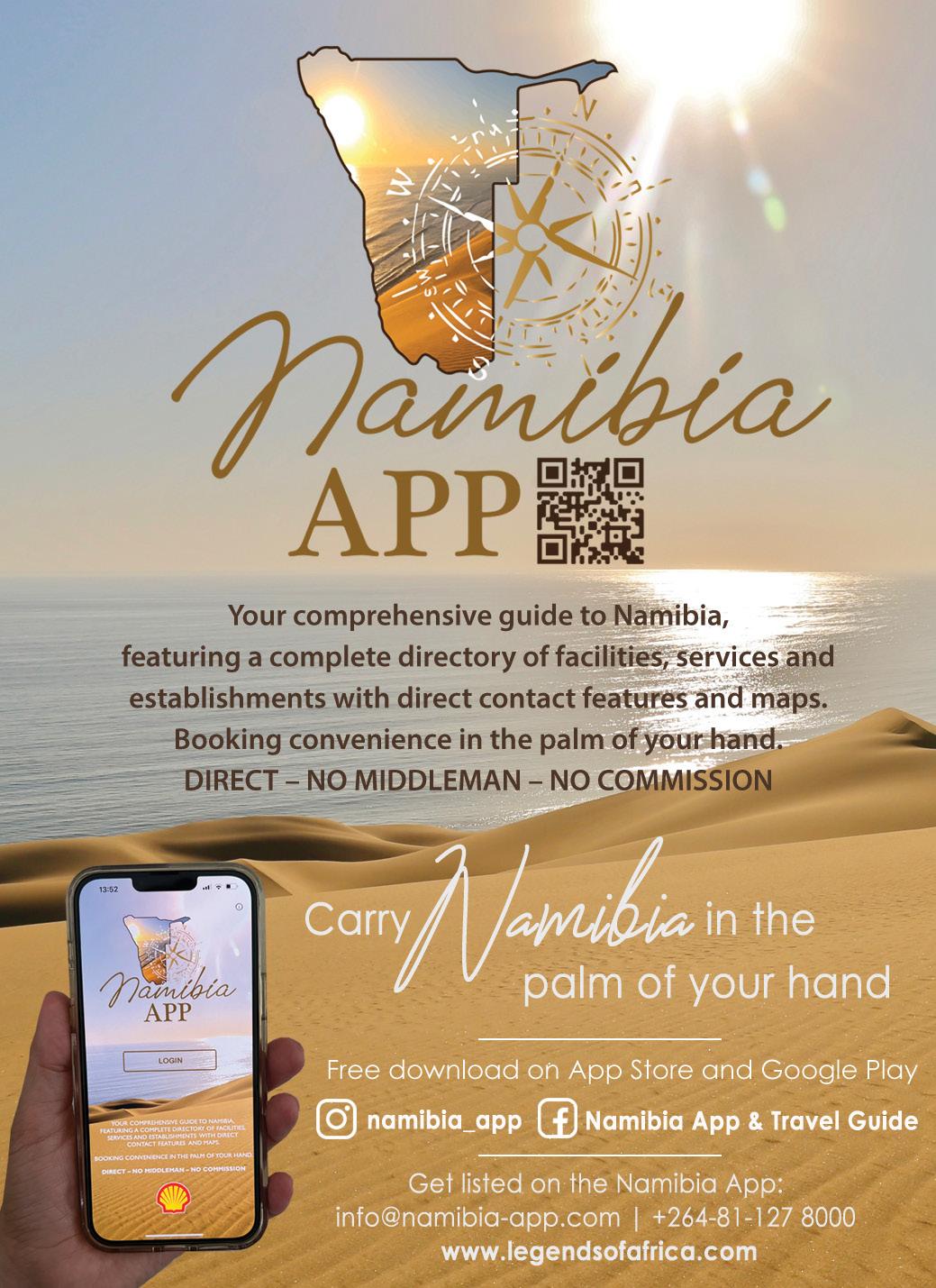

Welcome to Makalani Homeware. We are a distinctive online Namibian home décor business that takes pride in curating and sourcing a diverse range of items that seamlessly blends with the beauty of nature. We believe in the power of natural aesthetics, and our mission is to infuse your living spaces with a touch of that organic form.
So enjoy and explore our selection and let us help you discover the essence of tranquility and sophistication that Makalani Homeware brings to your home.
We deliver straight to your home, business or hotel.


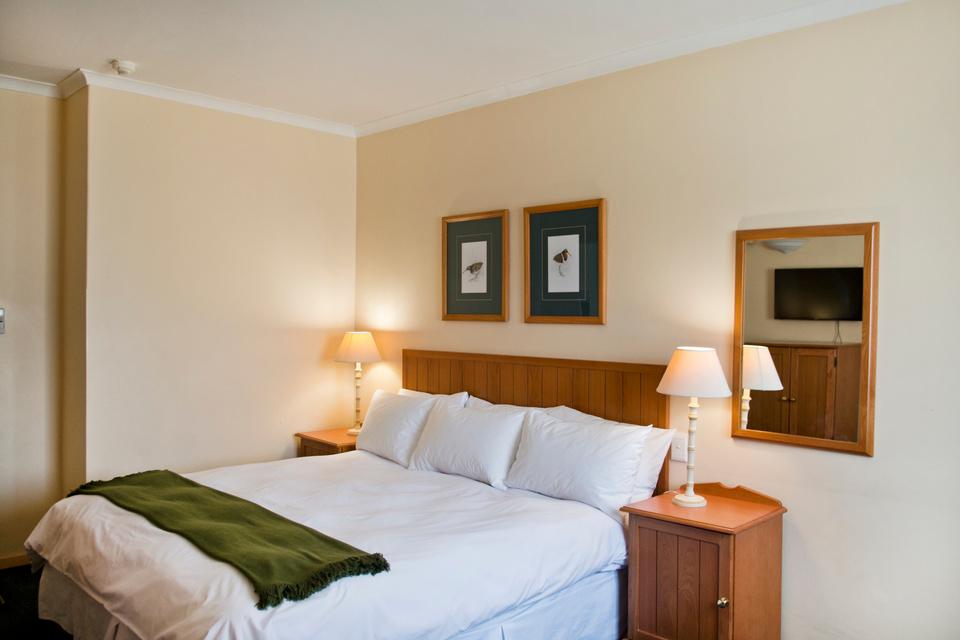

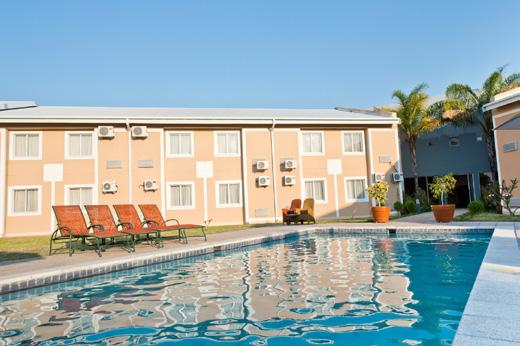
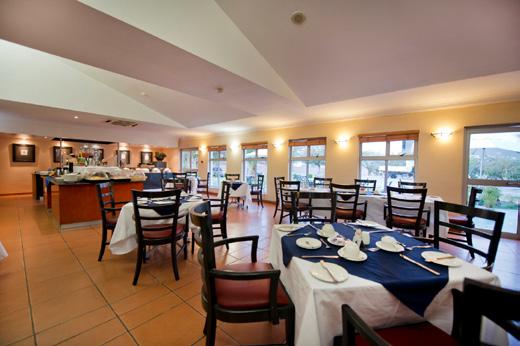

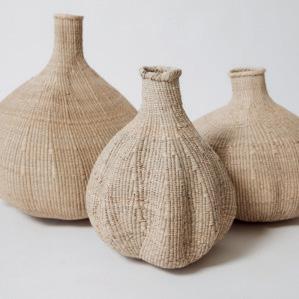

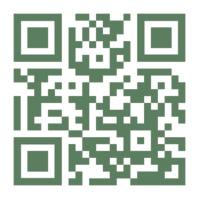


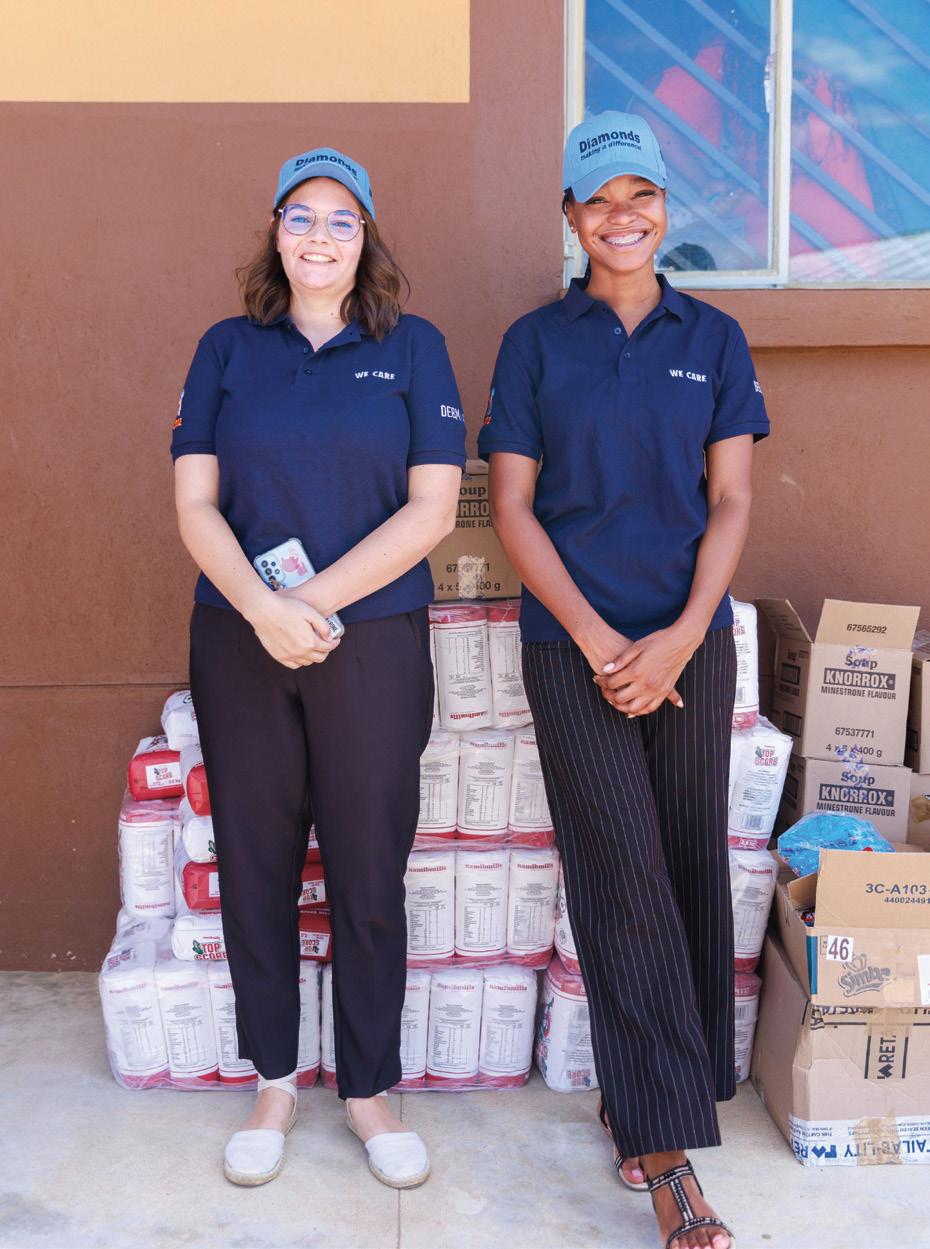
So many Namibian children wake up to home environments riddled with hunger, violence or abuse. This story is especially true for one of Windhoek’s poorest constituencies where many Namibians face abject poverty. Here in the heart of Okahandja Park informal settlement, Green Leaves Primary School, which opened in 2015, is hoping to be a sanctuary of love for children from the area, and if nothing else, provide them with a meal a day, which for many will be the only one they receive.
Striving to provide a safe space for children in the community, the school's motto is ‘Love, Nurture and Grow’. Their feeding program is one of the cornerstones of their success as many of the children attending don’t always have food at home.
Extensive research has shown the link between a child's academic performance and their levels of nutrition, prompting some to call food the most important school supply. What's more, the effects of an absence of childhood nutrition are not only felt during childhood, but have been proven to last a lifetime.
Fortunately, in Namibia, our people are known for their warmth and generosity, this is one of the cornerstones of the success of this great nation. Considering that nation-building is about the unification of the people within the country, it’s not that surprising that when the employees of Debmarine Namibia heard about the food shortages at the Green Leaves Primary School feeding program, they decided to band together to raise funds to sponsor essential food items for this school.
Moved by reports of overcrowding and food shortages at the school, employees decided to supplement the Ministry of Education’s feeding programme by collectively contributing over N$ 15 000 to buy much-needed food items.
This formed part of the Debmarine Namibia 'We Care' initiative and saw employees of Debmarine Namibia donating essential items such as maize meal, tins of fish, macaroni, cooking oil, sugar and soup.
This story is one where kindness and generosity filled hearts as well as stomachs, and through these acts of kindness children are able to focus on learning in their classrooms. Acting Principal of Green Leaves Primary School, Ms. Sofia Haipinge expressed profound gratitude to Debmarine Namibia employees and she stressed the significance of such acts of goodwill, highlighting them as demonstrations of community support and compassion. Ms. Haipinge emphasised the importance of ensuring that students have access to food during break times, noting that it helps prevent them from missing classes due to hunger.
Green Leaves Primary School, with its student population of 1,680 from Grade 1 to Grade 7, stands as one of the most populous schools in Windhoek. Having opened its doors nine years ago, each classroom accommodates 48 children, with approximately 49 teachers employed.
With the nourished light in their eyes, the story of the children of Green Leaves Primary School are an example of how individual people can make a difference when they stand together in the face of hardships, and when their consideration extends beyond themselves.



In the ever-evolving landscape of Namibian media, a new radio show has emerged that promises to elevate the spirits of its listeners to new heights. As of February, Future Media’s Radiowave proudly introduces Onboard with Laimi, a show that is not just a broadcast but a journey of inspiration and motivation, sponsored by FlyNamibia. This unique programme aims to be the ultimate positive show, leaving listeners feeling uplifted and motivated throughout the week. With Laimi Elago at the helm, audiences are invited to fasten their seatbelts for a ride filled with optimism, as FlyNamibia and Onboard with Laimi set off to take you to new heights of positivity.
Laimi, a luminary in the Namibian media landscape, is renowned for her infectious, bubbly personality that radiates through the airwaves. Her show seeks to find the silver lining in any situation, sharing her contagious energy with all who tune in. To get to know the voice behind this beacon of positivity, we sat down for a Q&A with Laimi, our favourite host and an all-around ray of sunshine.
When asked about the source of her unwavering optimistic outlook on life, Laimi attributes it to her faith. “The joy of the Lord is my strength,” she shares, revealing that her spiritual beliefs help her to see the glass as half full, regardless of life’s trials. This foundation of faith not only provides her with a peace beyond all understanding but also the resilience to weather life’s inevitable storms with a steadfast spirit.
“Engaging, fun and interactive,” are the three words Laimi uses
to describe what listeners can expect from her new show. With a genuine love for people and a passion for connecting with her fellow Namibians, Onboard with Laimi features interactive segments from Monday to Friday, designed to uplift spirits and bring smiles to faces across the nation.

In alignment with FlyNamibia’s mission to celebrate everyday Namibian heroes, Laimi’s show will feature guests who make a positive impact on the country, no matter the scale of their contributions. This focus on relatable, impactful stories promises to bring a diverse array of voices and perspectives to the forefront, showcasing the spirit of Namibia in its truest form.
In a world often overwhelmed by challenges, Laimi aims for her show to be a beacon of relatability and hope. “People just want to hear from someone who relates to them,” she says, highlighting her goal to connect with listeners on a personal level. Through her engaging content and warm personality, Laimi hopes to create a space where listeners feel seen, heard and inspired.
Onboard with Laimi takes to the airwaves, FlyNamibia and Radiowave have embarked on a journey that promises to not only entertain but profoundly touch the lives of Namibians across the country. With Laimi’s guiding light, the show is set to be a haven where listeners can come to find motivation, inspiration and a sense of community. So, tune in, and let Laimi lift your spirits to new heights, proving that no matter the turbulence, there is always a silver lining waiting to be discovered.

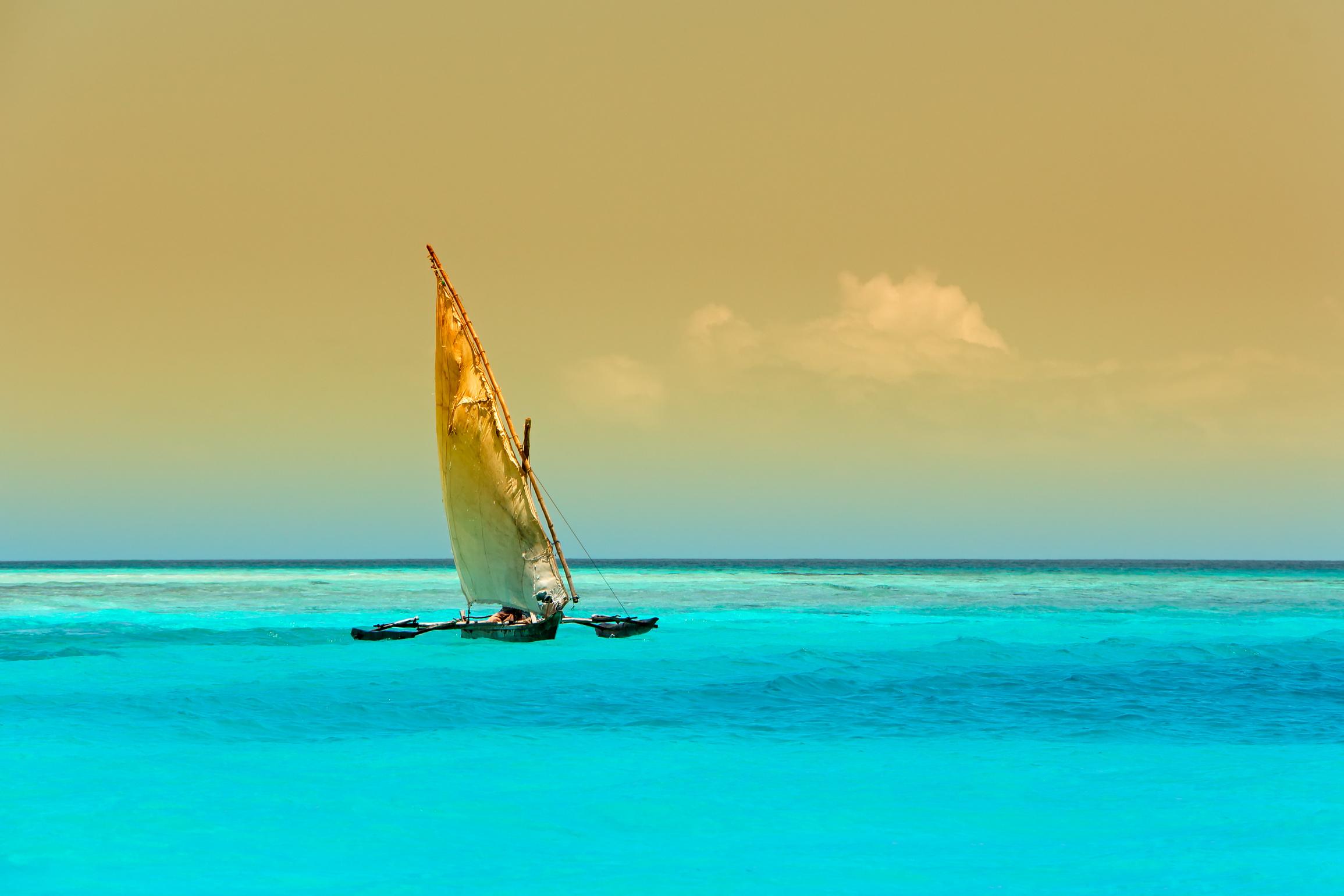
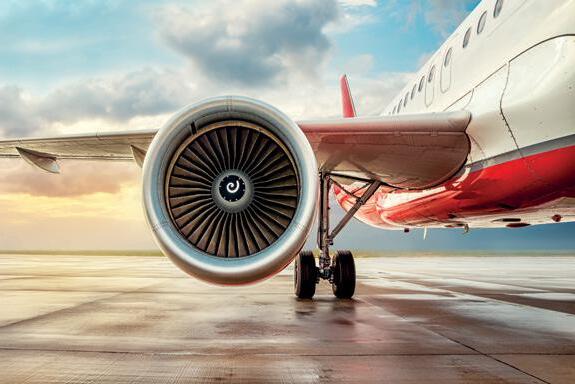


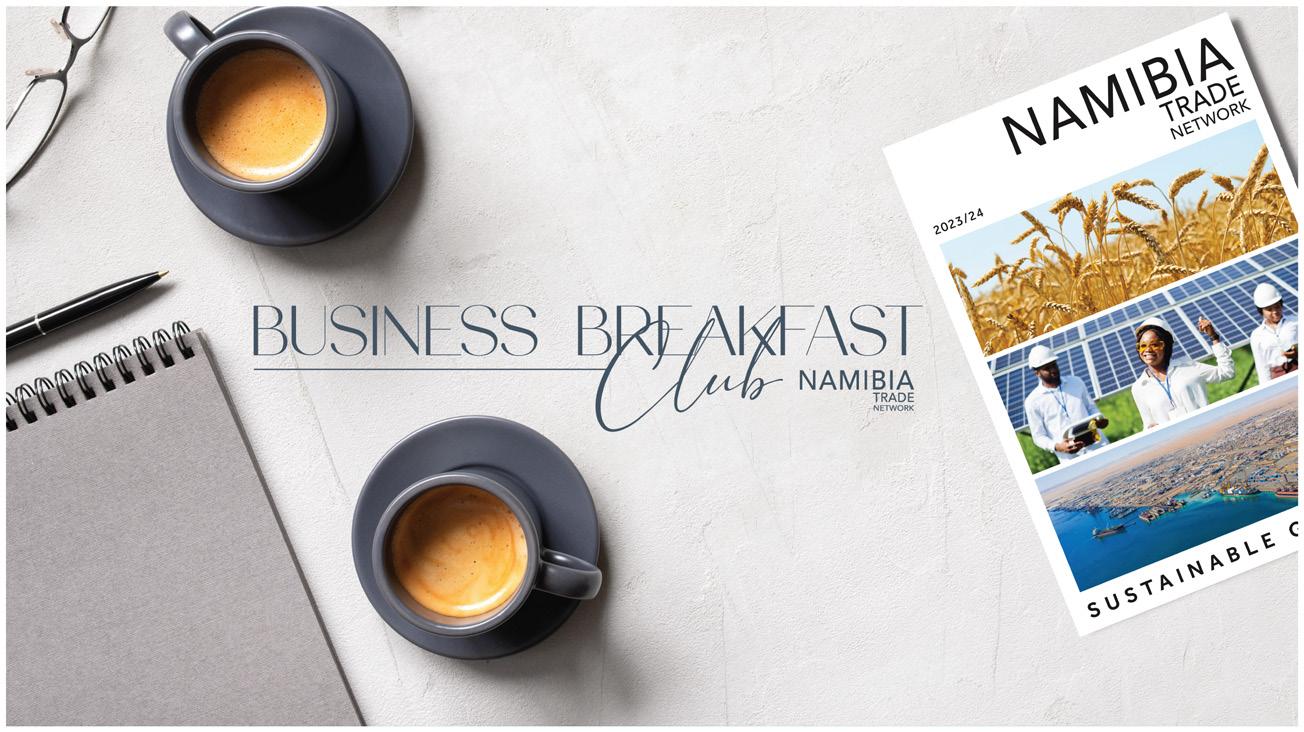

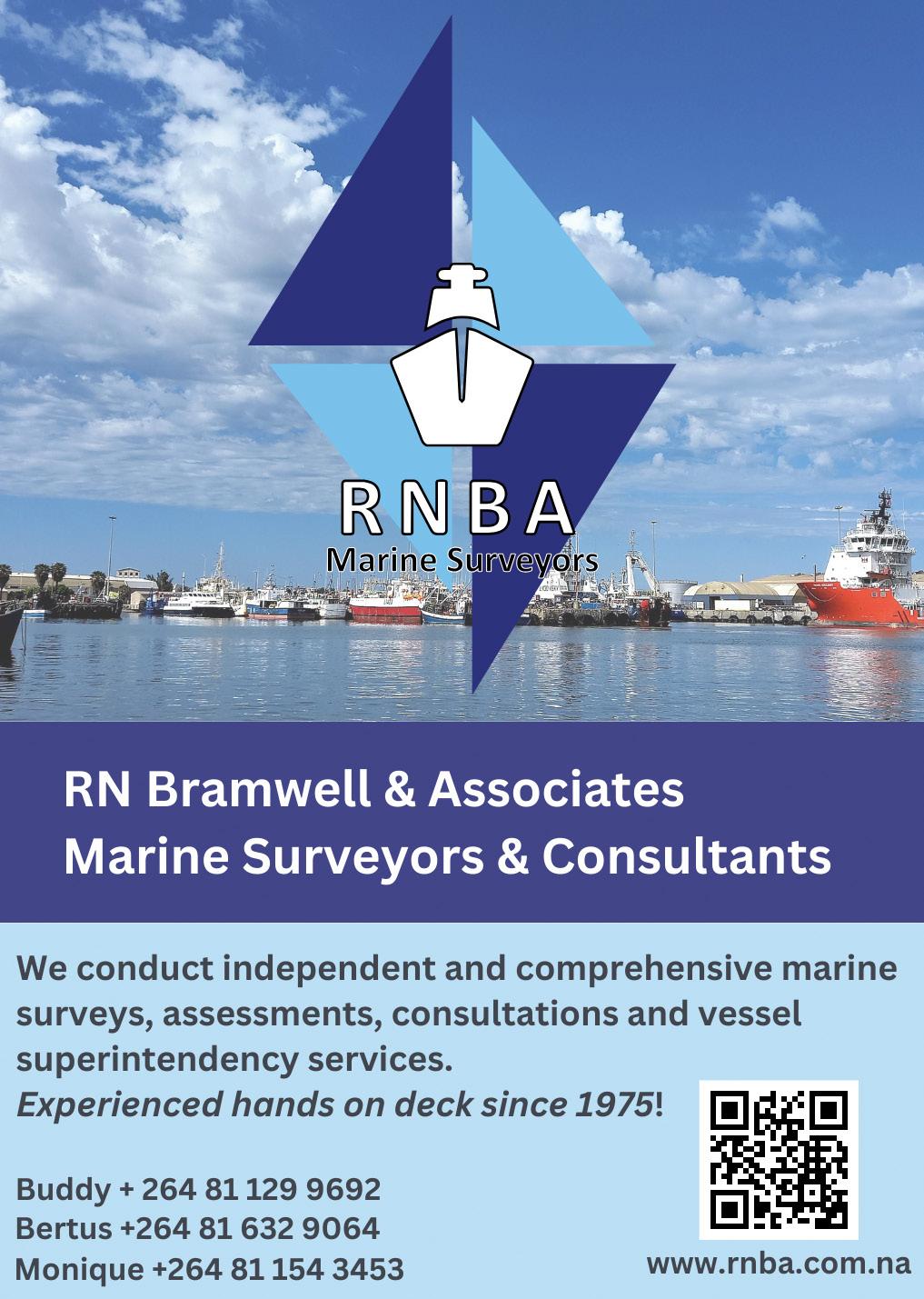
This month in history:
3 March 1923
The first issue of TIME magazine appears on newsstands. Henry Luce and Briton Hadden, who worked together on the Yale Daily News, originally thought about calling the magazine Facts.
7 March 1933
The Monopoly board game is invented.
8 March 1910
Raymonde de Laroche becomes the first woman to earn a pilot license. A Women of Aviation Worldwide Week is observed each year during the week of March 8th, calling attention to gender imbalance in the aviation industry.
10 March 1876
The inventor of the telephone, Alexander Graham Bell, places the world's first telephone call – to his assistant in the next room
19 March 2003
The U.S. launches its first attack on Iraq in an attempt to remove Saddam Hussein from power. Starting with aerial strikes in Baghdad, followed by a full-on invasion by troops, Baghdad was conquered just over 20 days later, and the dictator’s rule was over.
FUN FACTS ABOUT
21 March 1990
Namibia attains its hardwon independence from South African rule, nearly 45 years after its representatives first petitioned for independence at the UN.
27 March 1909
Fingerprints are used as evidence in a murder trial for the first time.
31 March 1958
The Eiffel Tower opens for the public at the World Fair in Paris, France. The iconic landmark took 2 years, 2 months and 5 days to build, an unparalleled achievement at that time.
Celebrate, observe and take part!
March
Endometriosis Awareness month
3 March
World Wildlife Day
The month of March gets its name from Mars, the Roman god of war, and was called Martius in the earliest Roman calendar. Martius marked the beginning of the season for warfare, which concluded in October.
March is considered the least productive month of the year in the U.S. Some companies have lost up to $1.9 billion in wages to staff who didn’t attend work in favour of watching NBA games, coining the term “March Madness.”
Every year, March and June finish on the same day of the week
The goal of Sudoku is to fill a 9×9 grid with numbers so that each row, column and 3×3 section contain all of the digits between 1 and 9.
4-10 March
Women of Aviation Worldwide Week
21 March
Namibia’s Independence Day







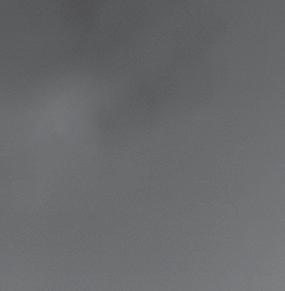

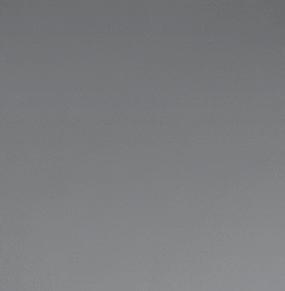




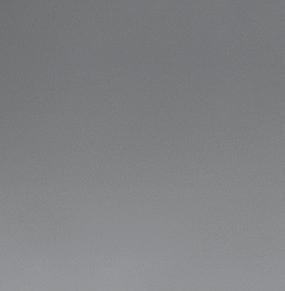

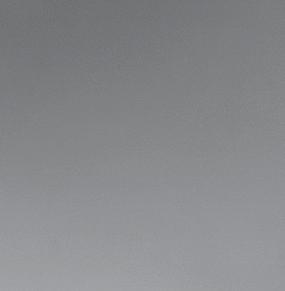



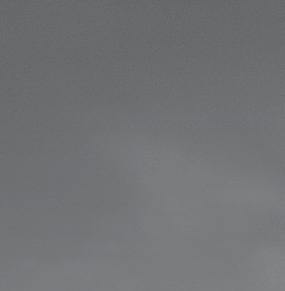

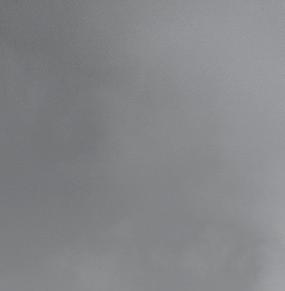
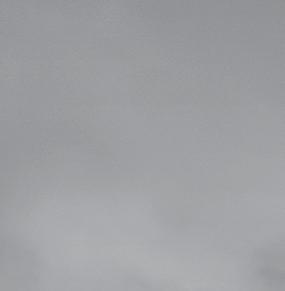
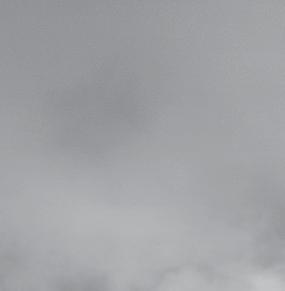

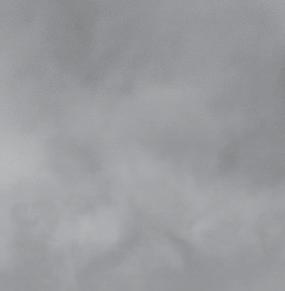
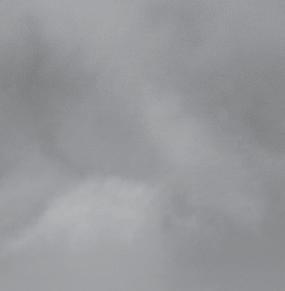
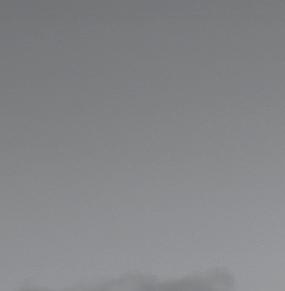

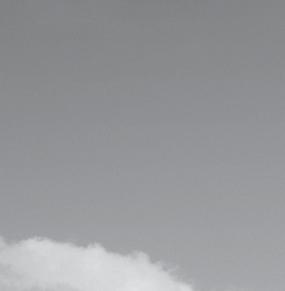
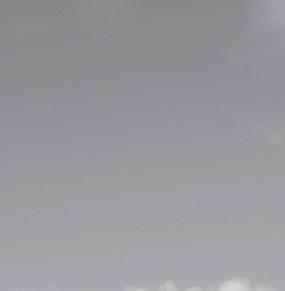
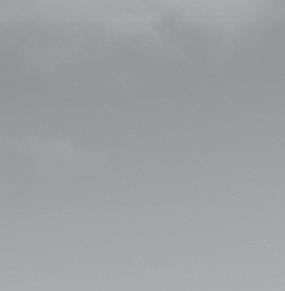
Time is the greatest gift of all.

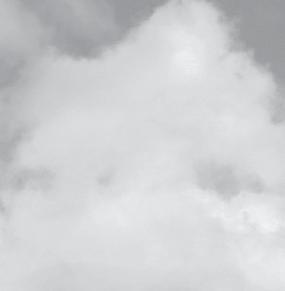







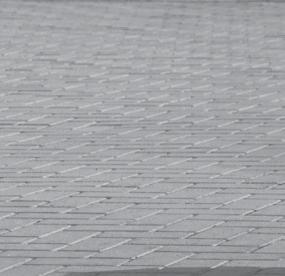








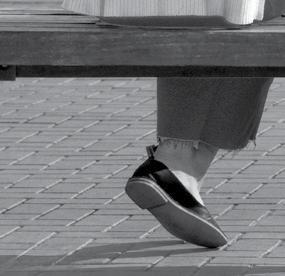



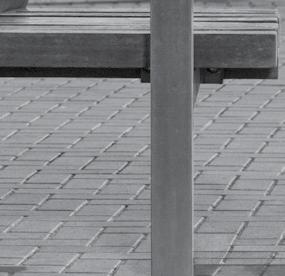

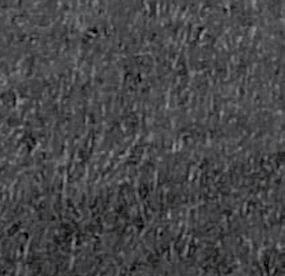


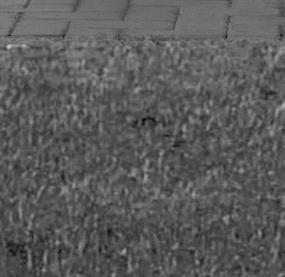




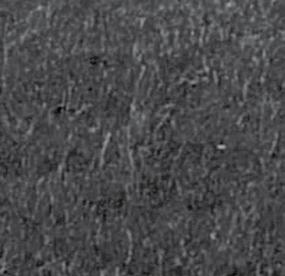

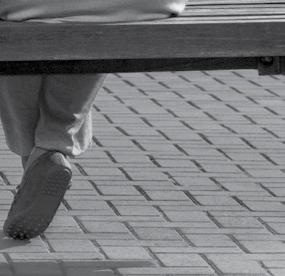

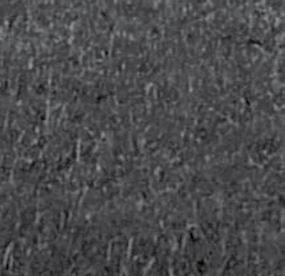
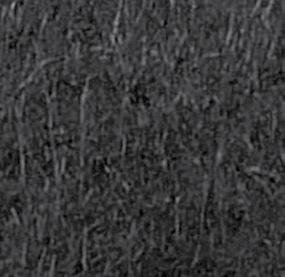
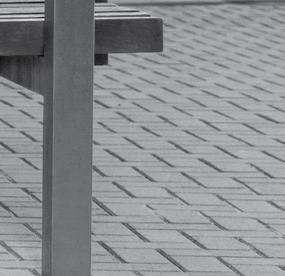










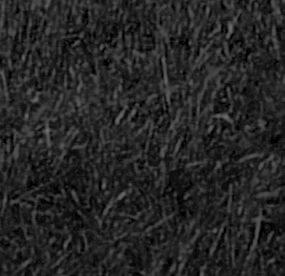



We all want more time to spend on the things that are important to us. Whatever those things may be, the good news is that if you invest early, time gives you money. And then, money gives you more time to spend on the things you love. Speak to us to make the most of your time. Call Allan Gray on +264 (0)61 22 1103, or your financial adviser, or visit www.allangray.com.na.





